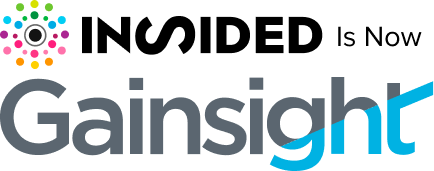Jo Johansson
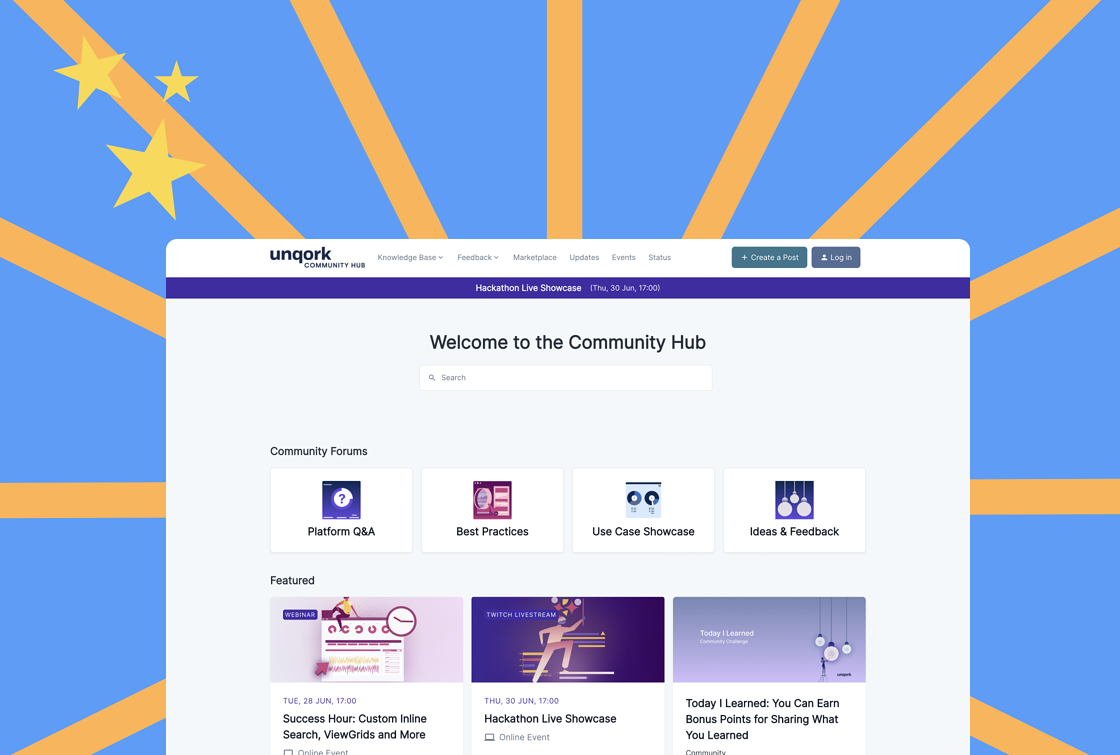
Case study: How Unqork creates a unified customer experience with community
When Unqork’s Director of Community, Danny Pancratz, joined the trail-blazing no-code platform in July 2021, he was excited to leverage inSided for a second time. With the goal of creating a unified customer experience through community, Unqork launched the Unqork Community Hub. A mere 9 months later, more than 85% of users are active multiple days per month, a number that signifies the value of the community.
Estimated Read Time: minute
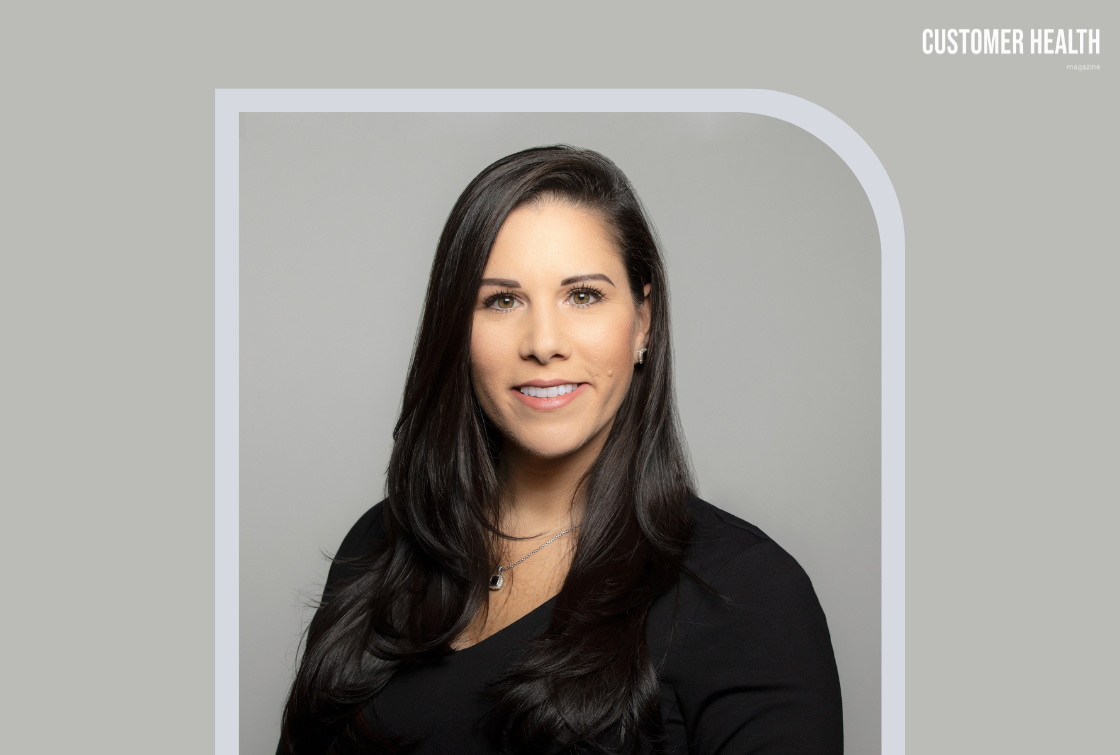
What’s next in customer health? Five leaders have their say
Deciding how to calculate your customer health score can vary from organization to organization. But one thing is true regardless of what industry or company size - it's critical to have this scoring system to avoid churn. Here's what these five Customer Success leaders predict will be the future of customer health.
Estimated Read Time: minute
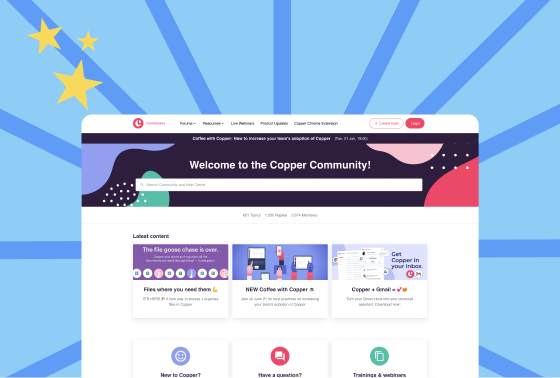
Case study: How Copper increased retention with community
When Ken Aponte first joined CRM software company Copper back in December 2020 as their VP of Customer Success, he noticed one thing: retention wasn’t where it needed to be. One year following the launch of the Copper Community, their community sees steady, linear growth, with retention following the same trend.
Estimated Read Time: minute
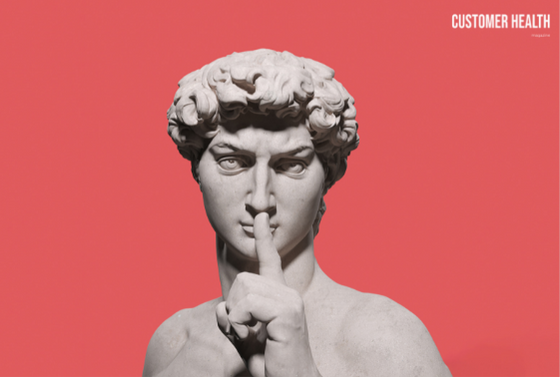
Day in the Life of a Customer Success Manager
Ever wondered what life as a Customer Success Manager is like? InSided’s superstar CSMs, Julian Lindhorst and Kenneth Refsgaard, shared what a typical day looks like for them.
Estimated Read Time: minute

A thing called churn: Gainsight’s CEO shares his path to customer success
"If you ever go into business, the only job that really matters is sales. Because once you've sold the customer, you can move on to the next customer. And it's all about getting new customers."That was Nick Mehta’s, the CEO at Gainsight, first lesson in business back in the 1980s when his dad brought him to the office on Take Your Kid to Work Day. Dressed to the nines in his little kid suit, he was educated into the old way of thinking: sales is the only thing that matters. New customers are the only thing that matters.
Estimated Read Time: minute
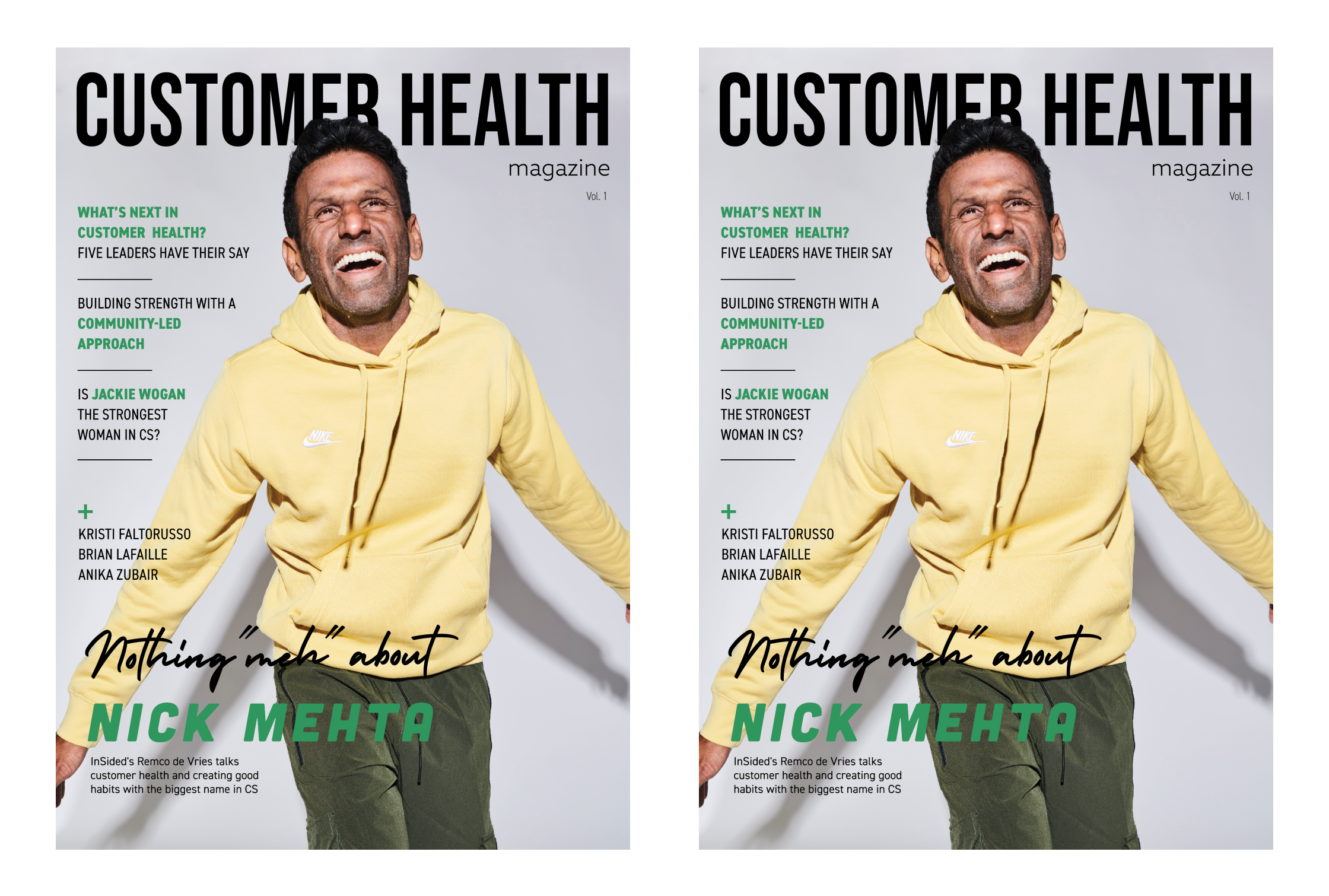
Hot off the press: Introducing Customer Health Magazine
Whoever uttered the words “publishing is dead” didn’t see this one coming.Ebooks, guides, and white papers, all have their place in the content mix, but what about an actual magazine created specifically for CS and community professionals?Introducing: Customer Health Magazine – The magazine for CS and community professionals.
Estimated Read Time: minute


3 ways community can help you burn the churn (and the stories to prove it)
Welcome to another week of Burn the Churn! This week, we’re continuing to work on the core by exploring how community allows your customers to engage with your product and your brand on their own terms. The result? A stronger, healthier relationship and less churn. Let's go! (Not signed up for the challenge yet? Join here.)Last week, we talked about data. And if we were to choose one metric category to focus on, it would be engagement.
Estimated Read Time: minute

Check yo churn: Are your indicators accurate?
Last week, we kicked off our Burn the Churn customer health challenge with a nice warm-up, talking about the new standard for customer health and going back to basics with a refresher course on customer health scores. (Sign up to make sure you don’t miss any of the good stuff!)
Estimated Read Time: minute

The new standard for customer health
Similar to the multi-billion dollar health and wellness industry, the SaaS industry goes through its own fads and trends. Some stick, others don’t.
Estimated Read Time: minute
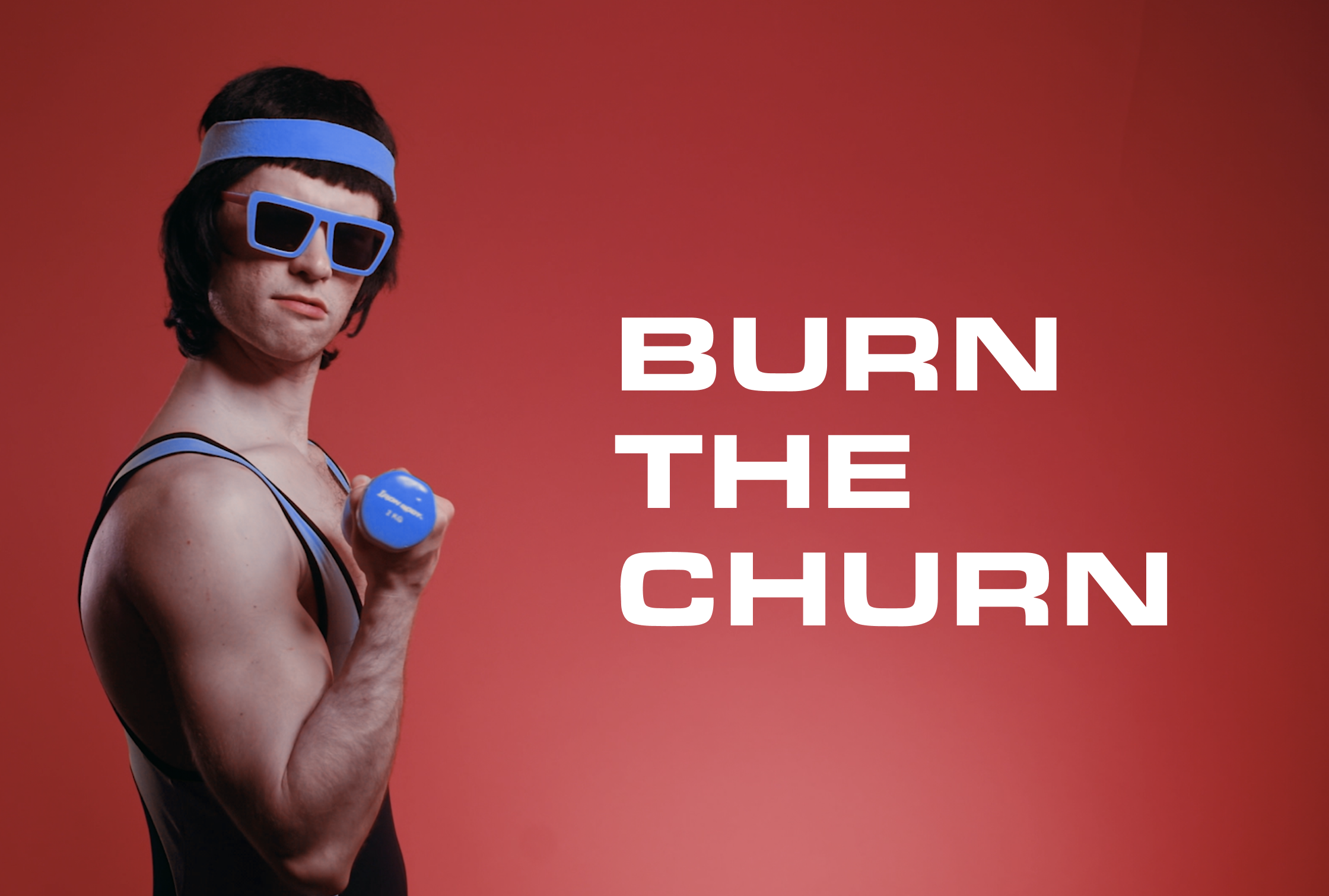
Burn the churn: Join inSided’s 8-week customer health challenge
New year, new renewals.
Estimated Read Time: minute

This year in review: engagement, community-led growth, and the definitive move to Digital Customer Success
Phwoar.
Estimated Read Time: minute
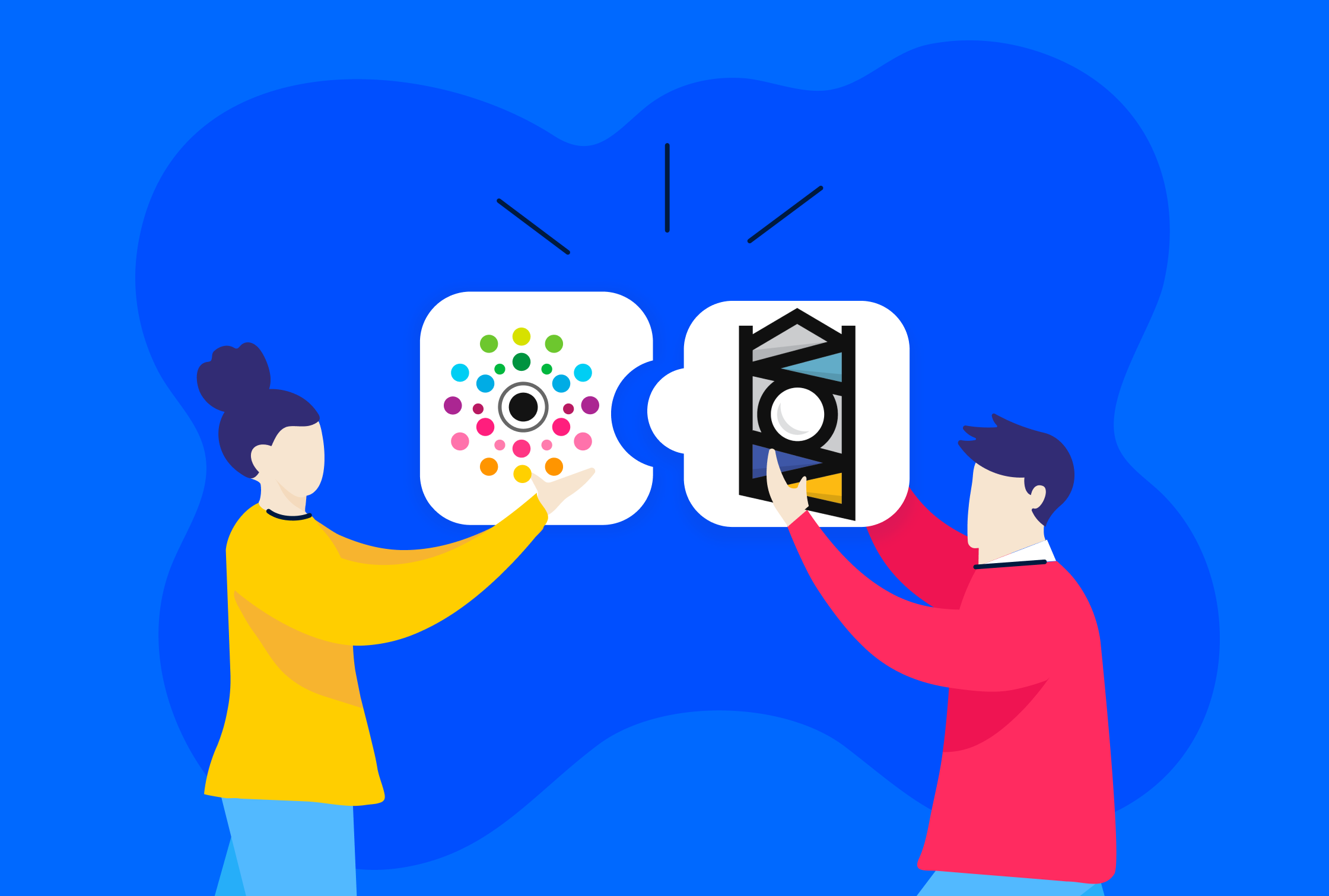
Leading community platform inSided partners with Clocktower Advisors
Clocktower Advisors is now partnering with inSided, a leading Customer Success community platform, to help customers improve retention, increase customer advocacy, and drive growth.
Estimated Read Time: minute

Customer horror stories: Sunset leaves customers staring into darkness
Today's inSi-DED story comes from no one other but Mary Poppen, CCO extraordinaire. In this story, she shares what happens when you forget to include a crucial date in your change management plan. (No big deal.)
Estimated Read Time: minute
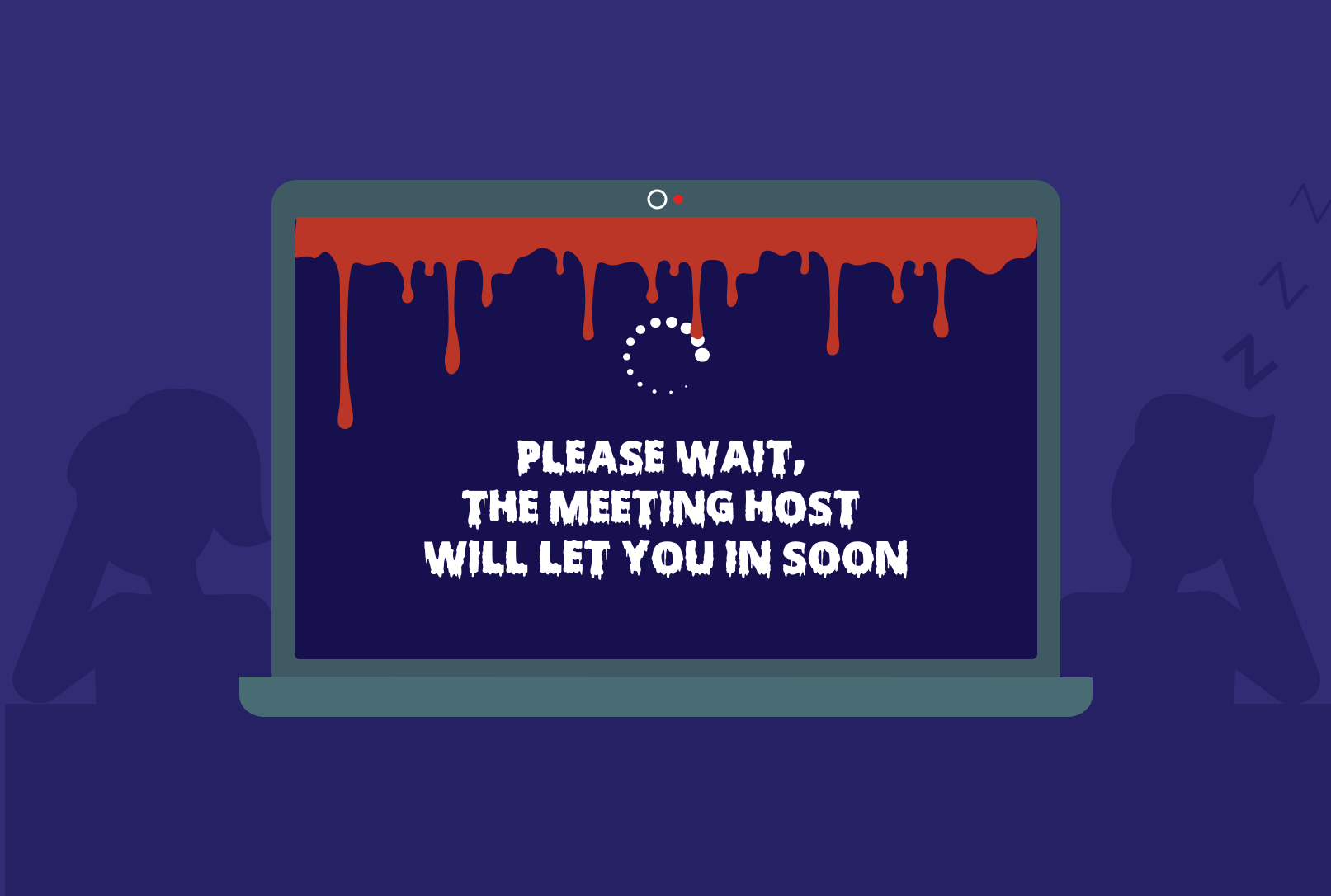
Customer horror stories: The webinar nightmare
Are you a webinar fan? A keen attendee? Perhaps an enthused host? If so, you might not be after you read this story. Months of preparation. Meticulous planning. Flawless slides. What could possibly go wrong?If you want to submit your own CS or community horror story, do so here. (You can be completely anonymous!)
Estimated Read Time: minute
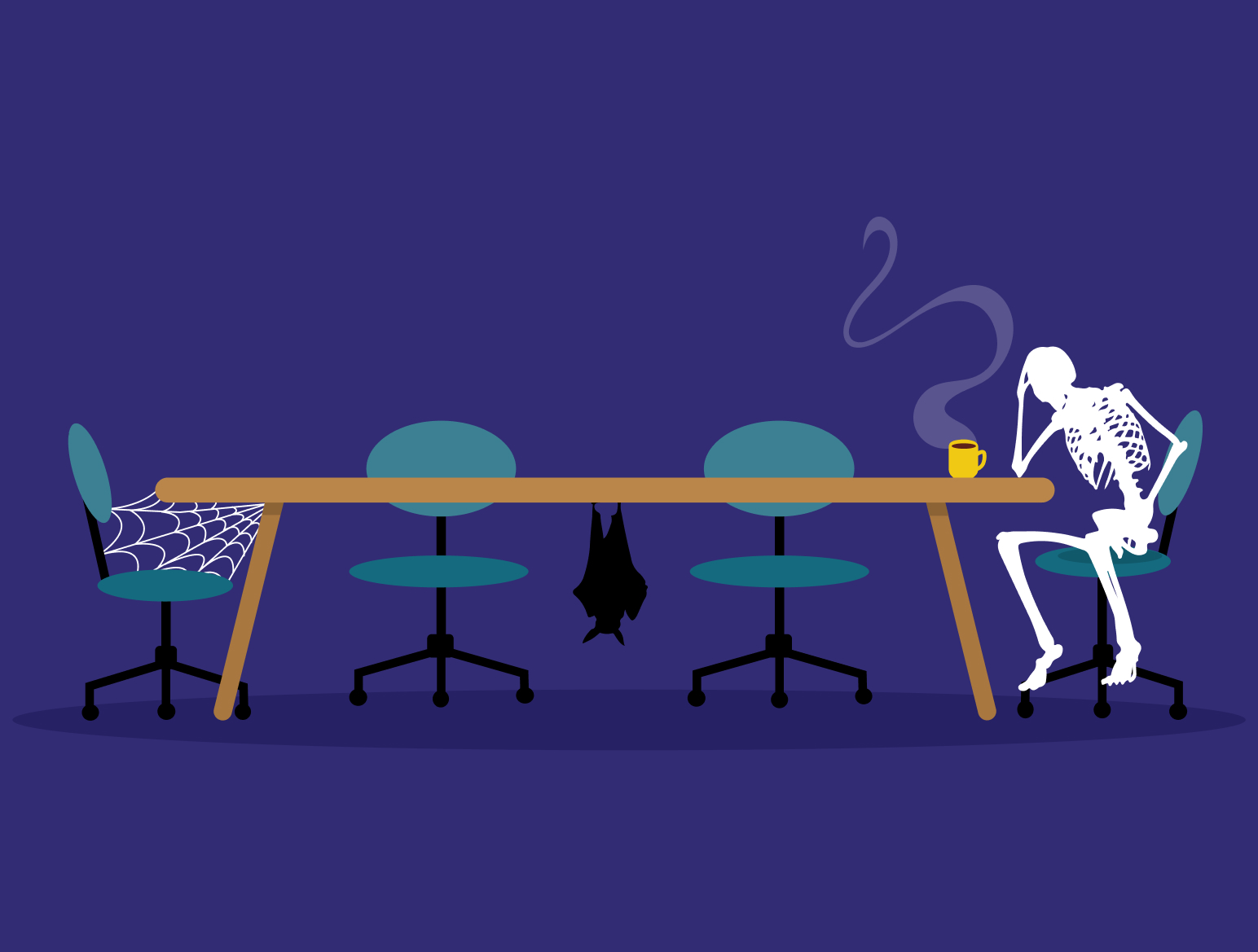
Customer horror stories: DOA – The Customer Advisory Board that wasn’t
Feeling inSi-DED? Excellent. Today's story comes from 2021 Top 100 Customer Success Strategist, Dana Alvarenga. If you want to know how NOT to launch a Customer Advisory Board, read on. If you want to submit your own CS or community horror story, do so here. (You can be completely anonymous!) --- In my role as a Customer Success Advocacy and Education Manager I was tasked with creating, planning, and launching a Customer Advisory Board for six different product lines in one organization.
Estimated Read Time: minute

Customer horror stories: An ill-fated meeting
Today's inSi-DED story teaches you a lesson in networking. Kind of. TLDR Networking isn’t always a good thing. Especially when two customers are paying very different prices for your product. If you still want to submit your own CS or community horror story, do so here. (And just like this contributor, you can choose to be completely anonymous!)
Estimated Read Time: minute
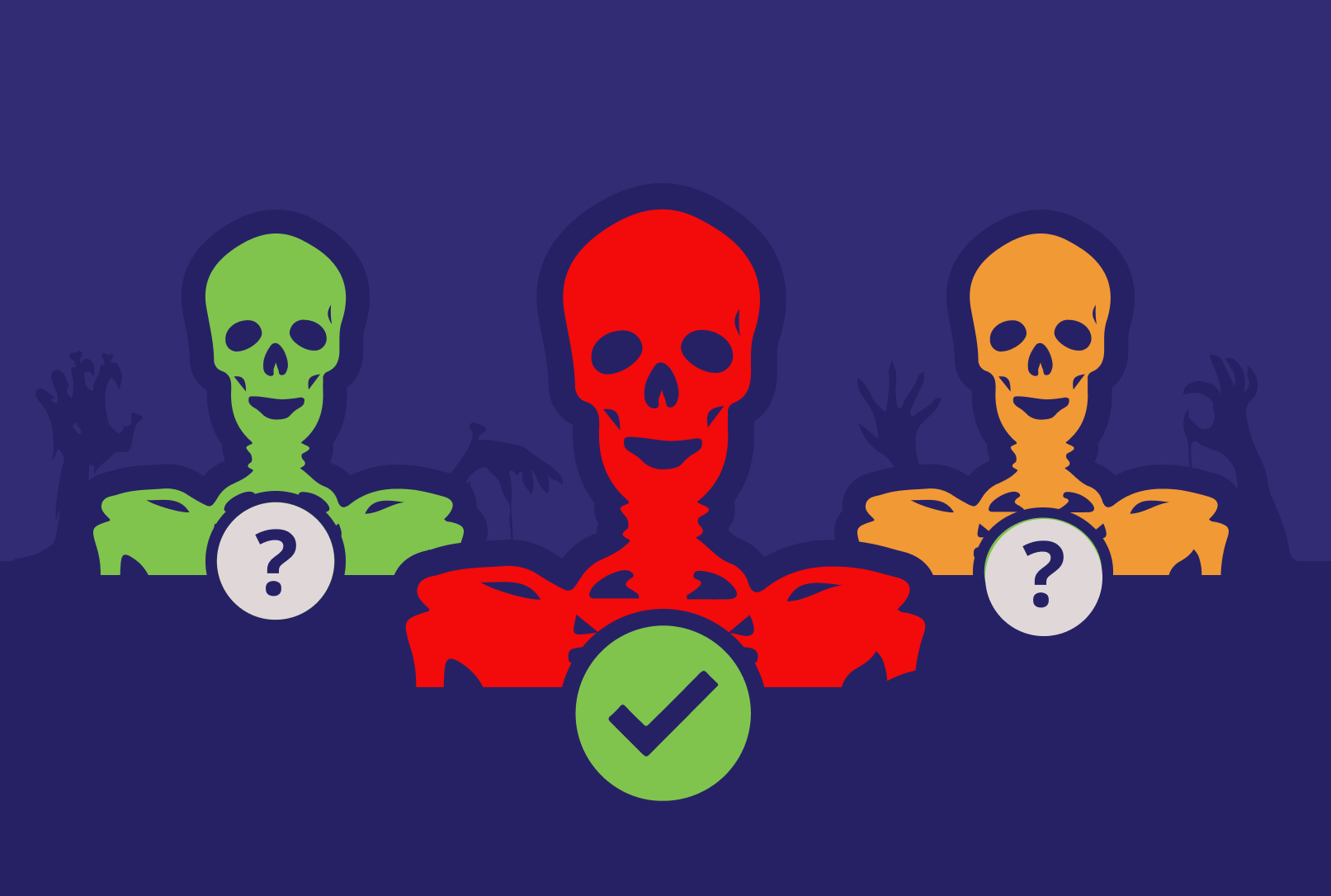
Customer horror stories: Account status – Unknown
Today's inSi-DED story brings you a tale without context. Literally. If you're a Renewals Manager, you might want to skip this one. Our thoughts go out to Jeremy Donaldson at NTT, who in this particular story was "as green in my career as spring leaves are on a tree."If you still want to submit your own CS or community horror story, do so here. (And just like this contributor, you can choose to be completely anonymous!)
Estimated Read Time: minute
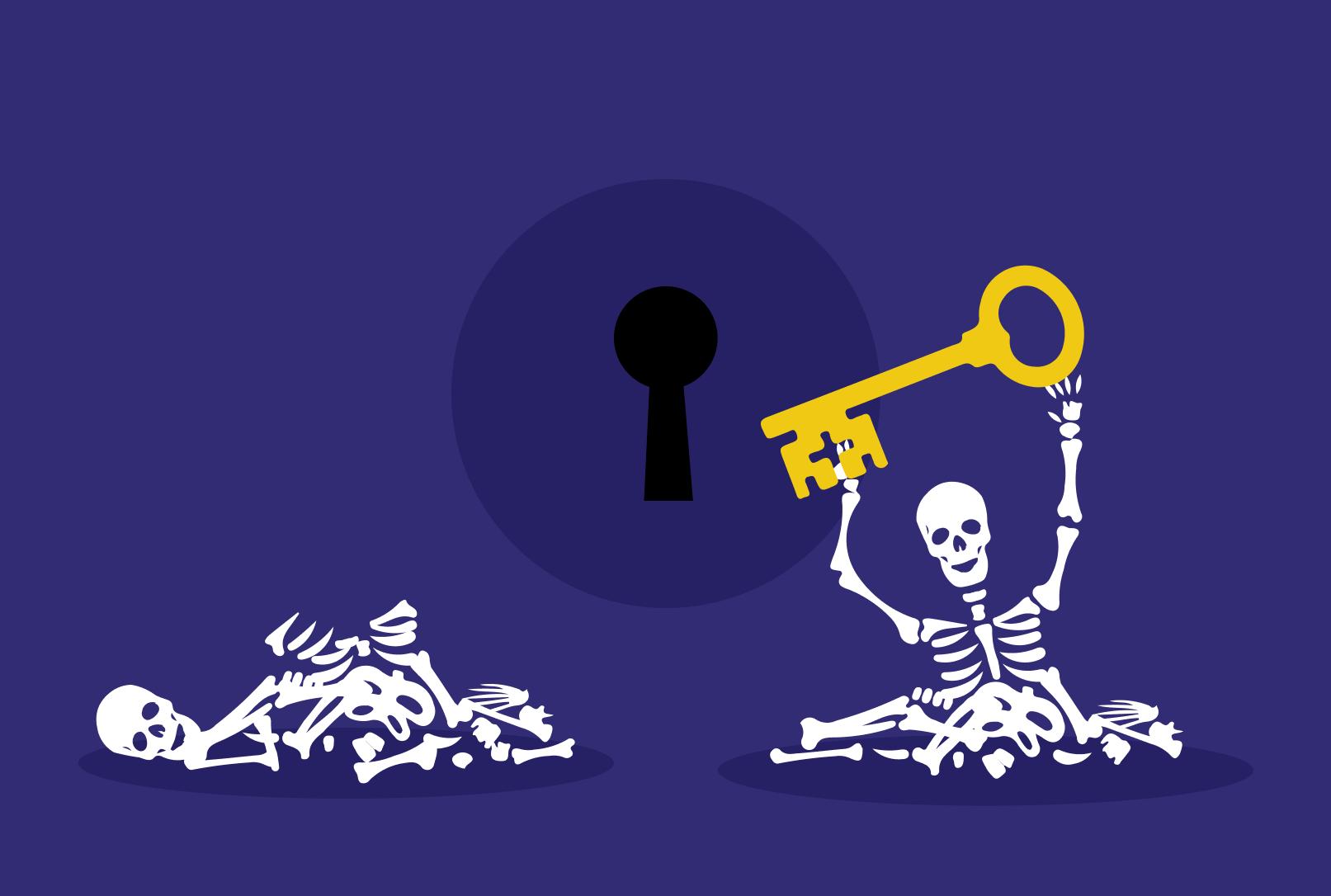
Customer horror stories: Perilous permissions
Our inSi-DED series is back! Starting this week, you'll get to enjoy one hair-raising story daily. Leave the light on, check under your bed, or in this case, make sure the correct user permissions are enabled. If you want to submit your own CS or community horror story, do so here. (And just like this contributor, you can choose to be completely anonymous!)
Estimated Read Time: minute

Customer horror stories: The unlucky customer
Our inSi-DED series is back! This week, an anonymous contributor shares a story that I'm sure we can all relate to. It's about that one account, that one customer, where everything just seems to go wrong. If you want to submit your own CS or community horror story, do so here. (And just like this contributor, you can choose to be completely anonymous!)
Estimated Read Time: minute

Customer horror stories: The renewal negotiation from hell
Our inSi-DED series is back! This week, Cognite's VP of Customer Success, Alex Farmer shares a story of the scariest negotiation of his life. Hold on to your pumpkins. If you want to submit your own CS or community horror story, do so here. (You can be completely anonymous!)
Estimated Read Time: minute
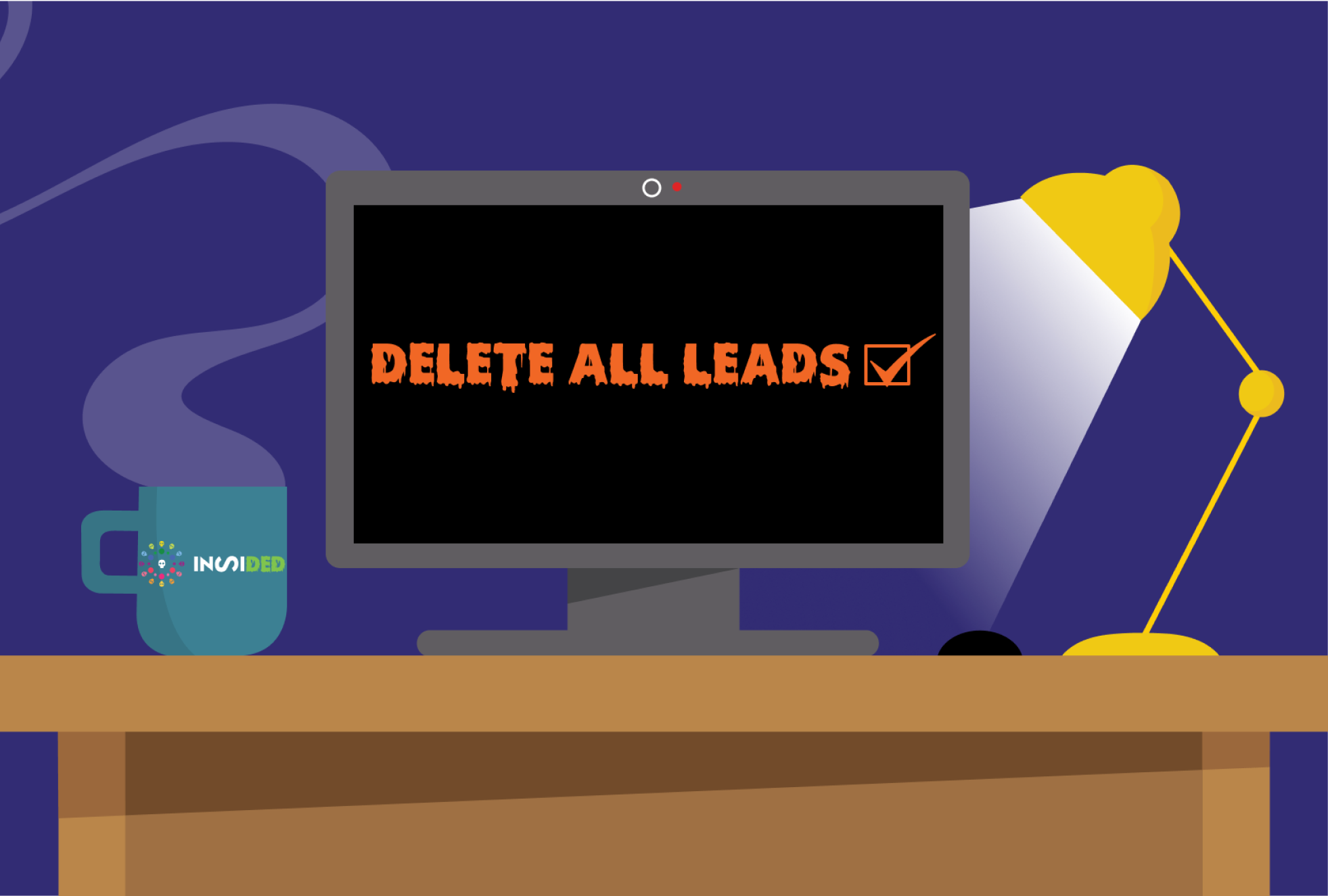
Customer horror stories: There’s no way back
Hello October! And welcome to our inSi-DED (see what we did there?) series. As the temperature drops and the evenings get darker, ‘tis the season for cautionary customer tales.As Customer Success and Community professionals, we know it's not all roses and rainbows. But we don't talk about these things enough – at least not openly. So that's why this month, with Halloween around the corner, we're sharing customer "horror" stories. Why? To learn from them, find comfort, and keep it real. If you have your own story to share, you can do so here. (You can be completely anonymous.)
Estimated Read Time: minute

Structuring your Customer Success team
We’re back! It’s time for another post in our series, This is Digital Customer Success, where we set out to get clarity on all things Digital CS. In our last post, we talked about the metrics that matter in your digital-led approach. This week, it’s time to talk more about the people behind those metrics – it’s time to talk about team structure. Because your digital-led team might just look a little different from your “traditional” team. Let’s dive in! Here we are. You’ve mapped out the customer journey, set your goals, you’ve created a channel strategy – it’s almost time to get to work. But before you can do that effectively, you need to define roles and responsibilities in your team. Now, back in the day, Customer Success teams were formed as a result of a need to provide high-touch guidance to your most valuable customers (read: highest paying customers). But as your customer base grows, so does the demand for CSM’s time and expertise. Plus, in the age of digital-led, customer needs are different, and, as a result – so is your CS team structure. But before we dive into the team structure, let’s take a look at why team structure poses such a challenge for Customer Success teams.
Estimated Read Time: 8 minutes

Reach, effect, ROI: Measuring the impact of your digital-led Customer Success program
New week, new knowledge! It’s time for another post in our series, This is Digital Customer Success, where we set out to get clarity on all things Digital CS. In our last post, we talked about creating a “one-step journey.” This week, it’s time to talk more about how to measure your digital-led program. Because no matter what channels you have in place, you’ll have data to guide you. So let’s make sure we’re looking at the right numbers!Digital Customer Success is all about data. Your ability to succeed will be determined by your ability to leverage your customer data in a scalable manner. As you build out your digital-led program, you’ll likely have plenty of data points to tell you if you’re on the right track. Once again, it’s time for Customer Success to borrow from marketing. Because while the end game is, as always, positive Net Revenue Retention (NRR), it’s the metrics that will get you to that point you’ll need to look at first.Let’s look at how your digital-led metrics differ from your usual suspects.
Estimated Read Time: minute
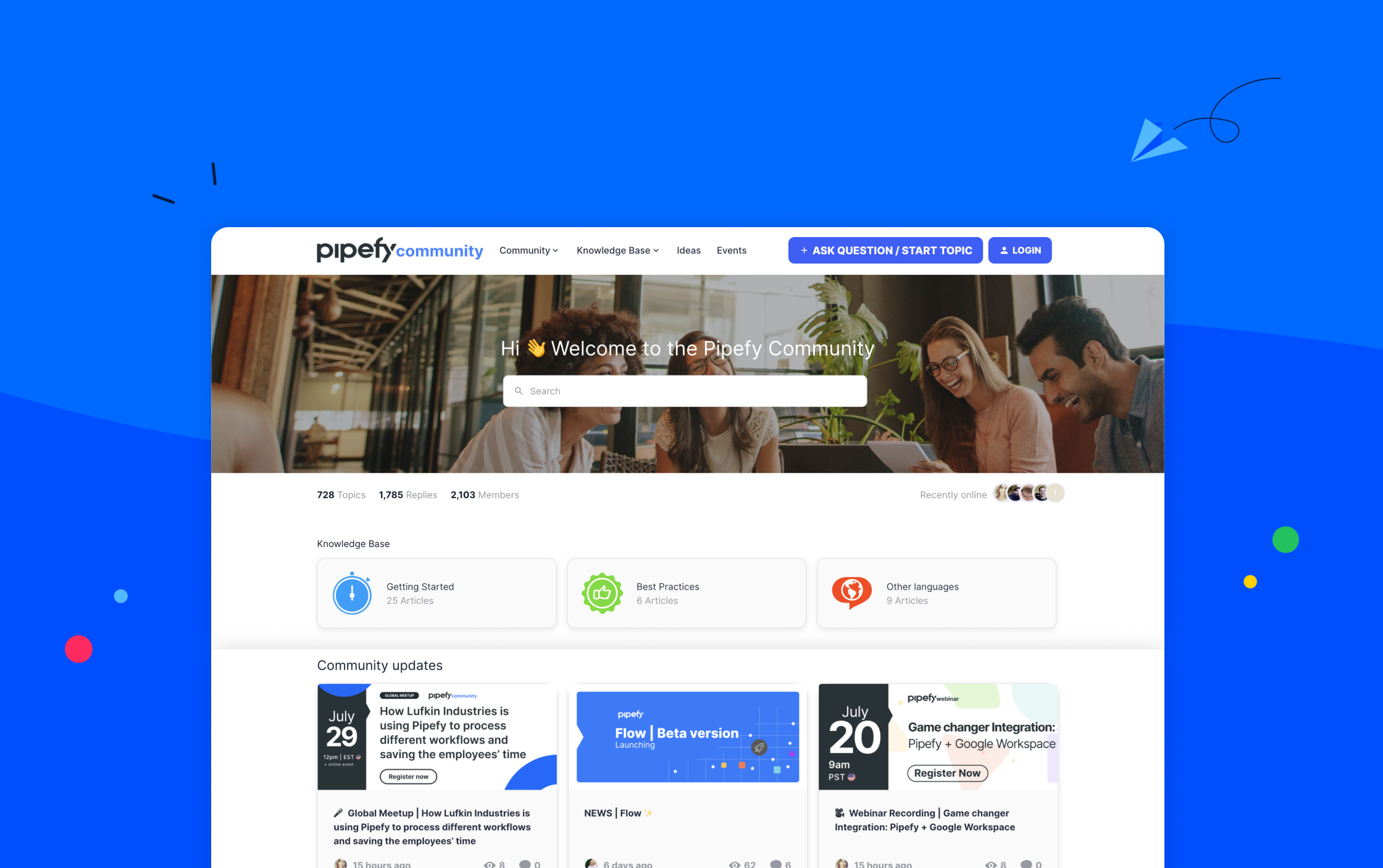
Case study: How Pipefy reached a 95% self-service rate in less than a year
In June 2020, Pipefy launched their community with one goal in mind: to decrease the number of support tickets and put self-service and peer-to-peer support at the heart of the customer experience. One year later, nearly 95% of support inquiries are solved by peers. We spoke to Juliana Spinardi, Community Specialist at Pipefy, about the community journey, the impact on engagement and self-service rates, and what’s next for the Pipefy community.
Estimated Read Time: 6 minutes
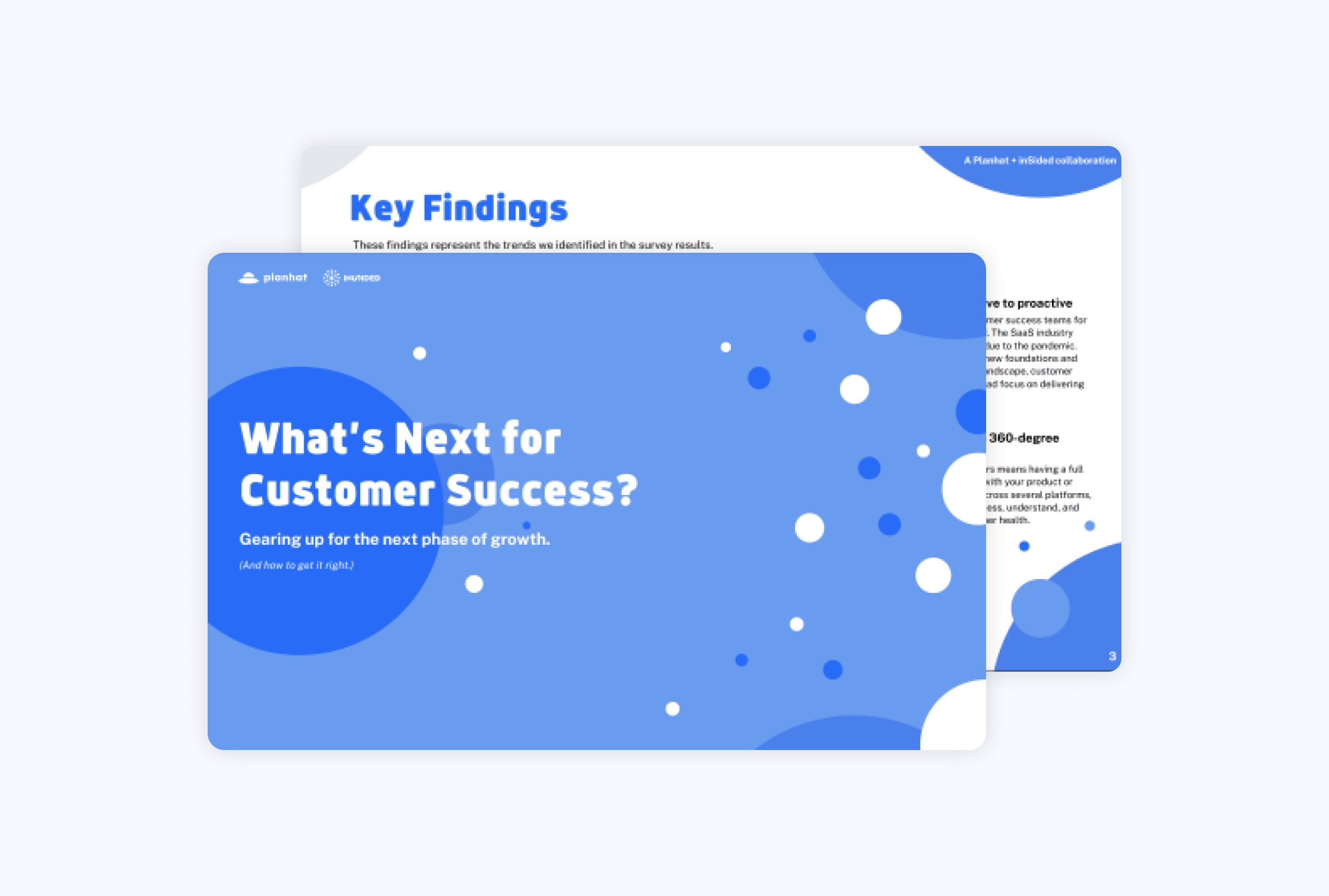
Report: What’s next for Customer Success?
Together with Planhat, we surveyed 150+ Customer Success professionals to get a better grasp on how the industry utilizes technology, data, and metrics. Because while CS teams have in many cases established themselves as true growth drivers, the industry is experiencing some growing pains. But there’s never been a better time for CS teams to step on the gas and capitalize on the momentum fuelled by a growing appreciation (and understanding) of Customer Success, not just as an industry, but as a key organizational function.In this report you’ll discover:
Estimated Read Time: minute

Building your Digital Customer Success program – Choosing your channels (Part 3)
Now that Integration Week is a wrap, it’s time to put our focus back on This is Digital Customer Success – the blog series where we set out to get clarity on all things Digital CS. In our previous post, we took a closer look at some of the key channels for your digital-led customer journey. This week, as promised, it’s time to get practical!
Estimated Read Time: minute

Integration week: It’s a wrap
Integration Week here at inSided is coming to a close. Let’s take a look at what we’ve learned this week and remind ourselves why it's important to have an integration strategy for your community in the first place.On Monday, we kicked off the week by talking about why having an integration strategy is so important. To jog your memory, an integration strategy prevents you from having a reactionary approach to building out your tech stack and buying tools that might not serve you well. And remember, it’s about connecting to existing processes to help create better results for your customers – no need to reinvent the wheel. On Tuesday, we proudly announced our new Productboard integration and talked about why should you use a customer community to collect feedback. Plus, we hosted a webinar with Scott Baldwin, Community Lead & Product Evangelist at Productboard, talking about all things community and product. As Scott pointed out, “Often, as companies begin to scale or if the company is already large, we forget to listen. Or there simply aren’t enough folks close to the product that can give their time to do so. That’s why you need community." Check out their recently launched Product Makers community here. On Wednesday, we took a closer look at our Salesforce integration and talked about how you can combine community and business data to build a 360-degree customer view. We looked at three specific use cases including the aforementioned along with ticket escalation for simplified support workflows and accessing Salesforce knowledge base articles with Federated Search.On Thursday, it was time to look at one of our customer favorites – the Zendesk integration. Why is it a favorite? Easy. It helps teams build better support workflows and create a better customer experience by allowing customers to access the content they need directly in the community. The result? Increased self-service rates.
Estimated Read Time: minute

Integration Spotlight: Increase self-service rates with Zendesk federated search
In today’s post, we’re taking a closer look at Zendesk and show you how you can increase self-service rates using the federated search integration and get customers faster 1-on-1 help by escalating tickets. Let’s dive in.
Estimated Read Time: minute
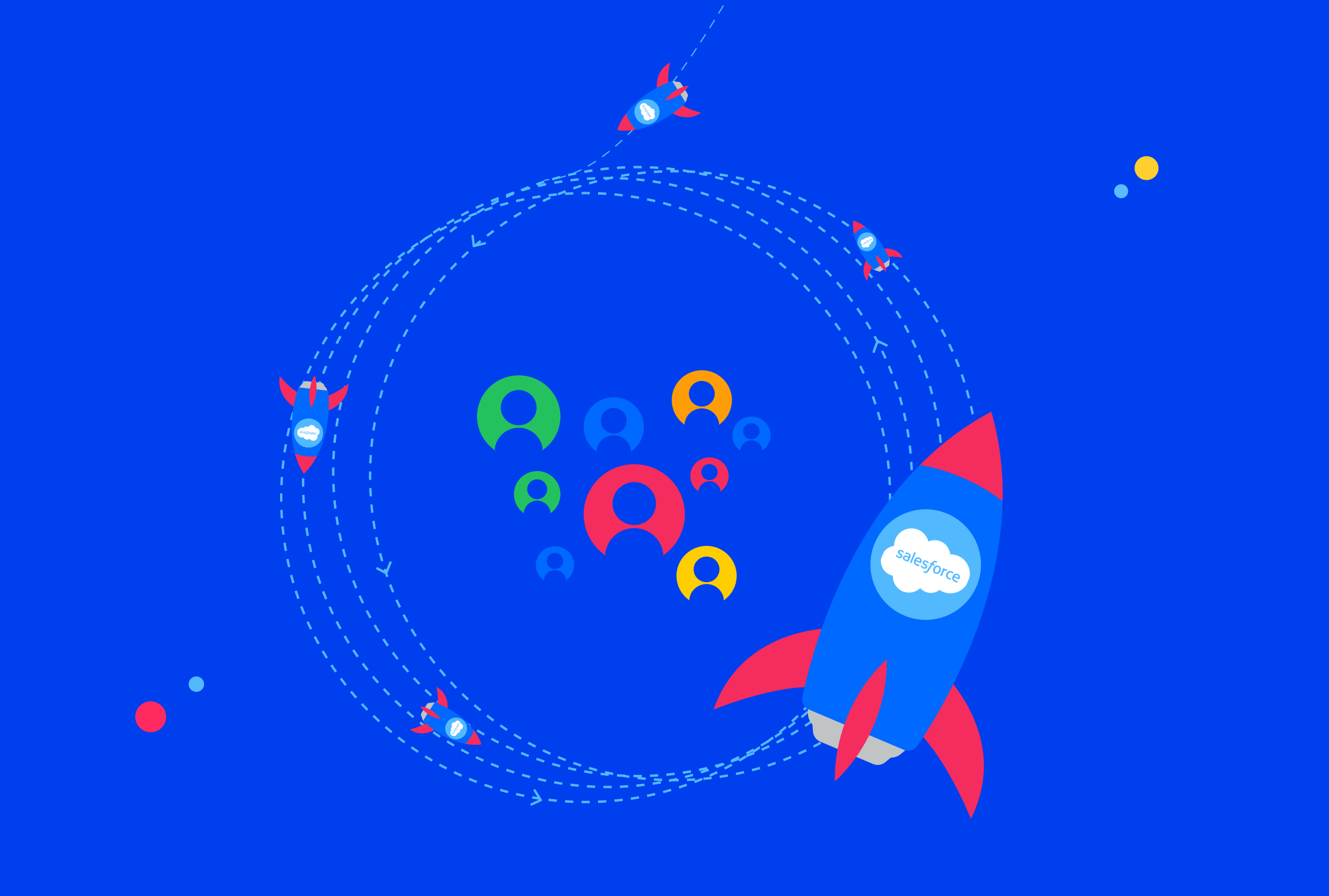
Integration Spotlight: Get a 360° customer view with Salesforce
In today’s post, we’re diving deeper into our Salesforce integration to show you how you can combine the power of two of the most powerful tools in your CS tech stack – your CRM and your community platform.
Estimated Read Time: minute

New integration: Centralize your customer feedback with inSided and Productboard
Today we’re excited to launch our new Productboard integration to help Community and Customer Success teams create better workflows with Product and make sure no more important insights fall by the wayside.But before we dive into the integration, why should you use a customer community to collect feedback in the first place?
Estimated Read Time: minute

Welcome to Integration Week – Your community tech stack just got better
Welcome to Integration Week! It’s about time we started talking more about our integrations and how they can help you get even more out of your customer community.Our integration stack helps your customers access the content they need and get faster 1-on-1 help, creating a more dynamic community environment. Plus, they make your day-to-day easier by improving workflows, automating repetitive tasks, and enriching data points – all in the name of creating a better customer experience.This week, we’ll introduce you to new integrations (come back for a deep dive into our new Productboard integration tomorrow!) and showcase some of our fan favorites.Today, let’s talk a bit more about why having an integration strategy is so important.
Estimated Read Time: minute
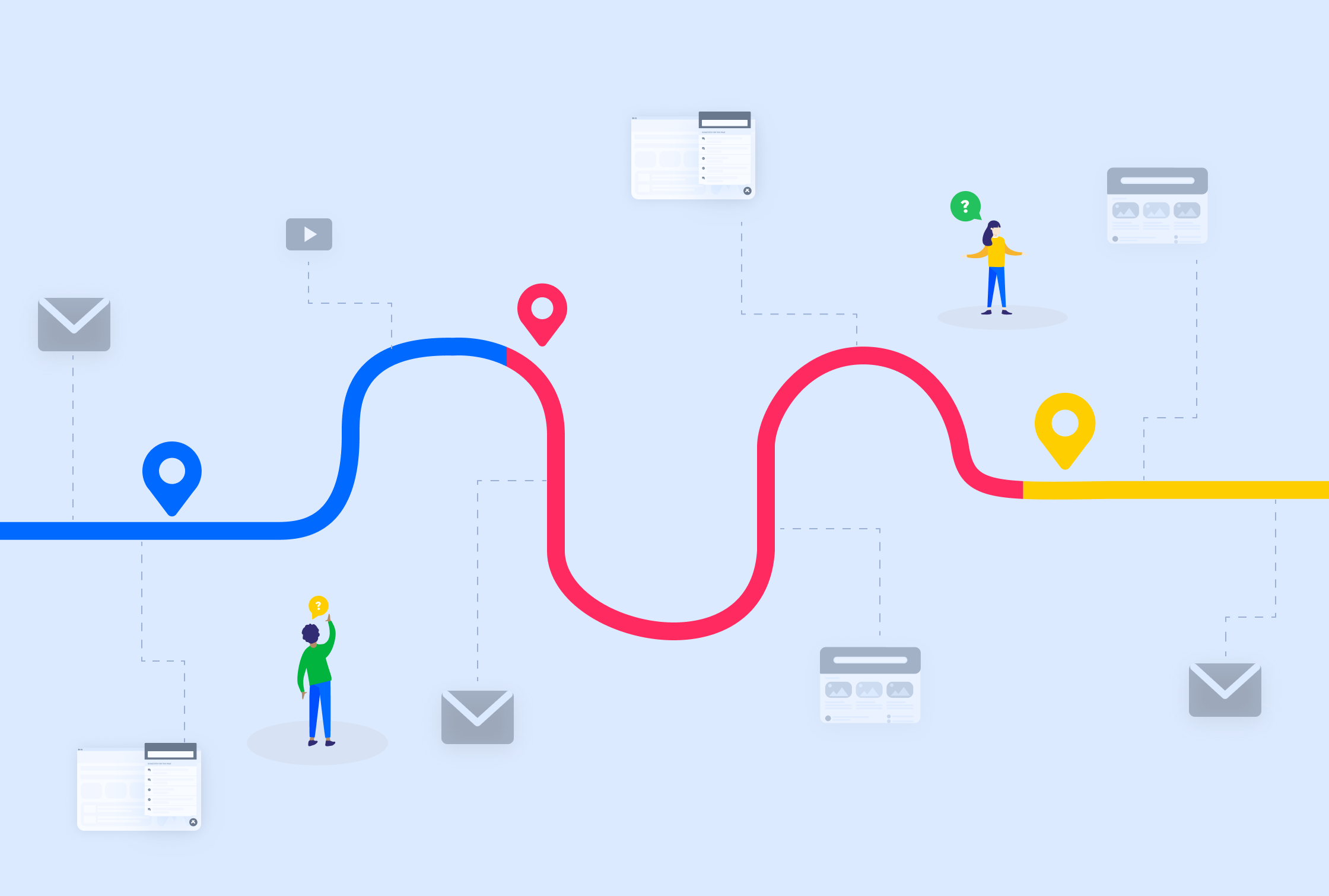
Building your Digital Customer Success program – Choosing your channels (Part 2)
Welcome back to This is Digital Customer Success, our blog series where we set out to get clarity on all things Digital CS. Last week, we looked at what you need to think about when you develop your digital channels. This week, it’s time to take a closer look at channels. Let's jump in.The ultimate vision for a digital-led strategy is this: the ability for your customers to choose their own self-guided journey.To realize that vision, a lot of things need to fall into place. With your behavior-driven customer journey in hand, it’s time to explore what channels can help you create that self-guided journey.Let’s break this down into onboarding, adoption, and retention and focus on a few key channels for each phase.
Estimated Read Time: minute
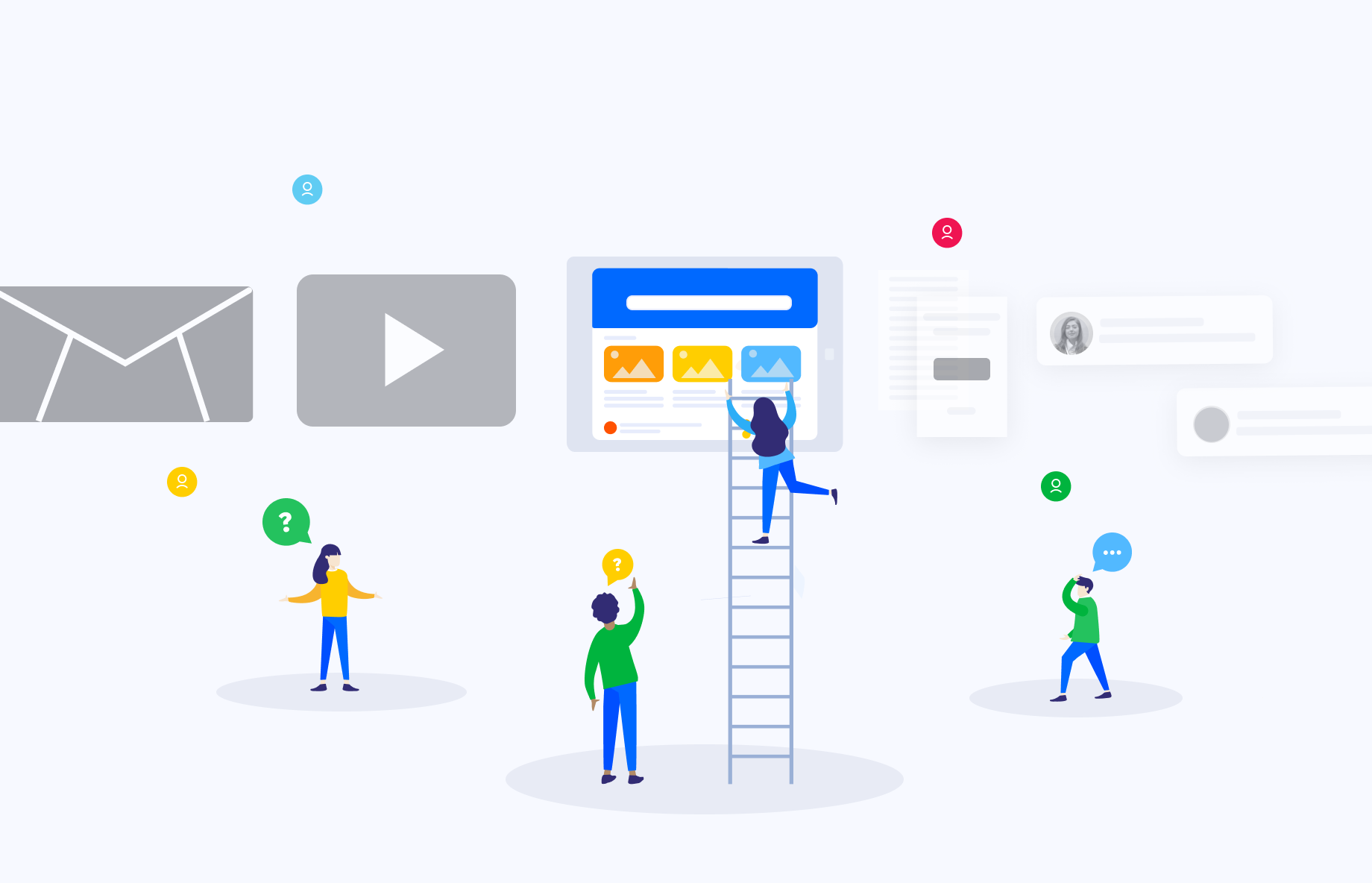
Building your Digital Customer Success program – Choosing the right channels (Part 1)
Welcome to the fourth installment in our new series, This is Digital Customer Success where we set out to get clarity on all things Digital CS. In our first post, we started off by defining Digital Customer Success and explained how it’s different from “traditional” Customer Success. Next, we dove into the core components of Digital Customer Success and most recently we walked you through a new way of mapping out the customer journey. This week, it's time to take a closer look at channels.
Estimated Read Time: minute

Webinar highlights: How to transition from a high-touch to a tech-touch strategy
This week, we decided to interrupt your regularly scheduled This is Digital Customer Success blog post to bring you some learnings (that just couldn’t wait) from last week’s webinar.Looker’s Brian LaFaille joined us to answer some of the most pressing questions around Digital Customer Success, in particular how to transition customers from high-touch to tech touch. In one of our most popular webinars to date, Brian served up some serious knowledge around customer journey mapping, segmentation, and scaling Customer Success.Below, we’ve listed our favorite learnings.
Estimated Read Time: minute

Building your Digital Customer Success program: (a new take on) mapping out the customer journey
Welcome to the third post in our new series, This is Digital Customer Success where we set out to get clarity on all things Digital CS. In our first post, we started off by defining Digital Customer Success and explained how it’s different from “traditional” Customer Success. Last week, we dove into the core components of Digital Customer Success.Now, it’s time to get down in the trenches. Because where do all great CS plans start? With the customer. That’s why this week, we’re tackling the first step in building your Digital Customer Success program: mapping out the customer journey.Mapping out the customer journey is not just about understanding what happens in each phase. It’s about identifying the outcome that will enable your customers to experience and realize recurring value from using your product.So, how do you do that? You start by identifying key product behaviors that customers need to achieve to obtain value.It’s time to rethink the customer journey as we know it.Let’s get to it.
Estimated Read Time: minute

The core components of Digital Customer Success
Welcome to the second post in our new series, This is Digital Customer Success where we set out to get clarity on all things Digital CS. Last week, we started off by defining Digital Customer Success and explained how it’s different from “traditional” Customer Success. If you missed the post, head this way.This week, it’s time to assess Digital Customer Success further. The way we see it, Digital Customer Success is made up of a number of core components that – when used effectively – allow CS teams to scale their efforts without adding headcount and, ultimately, help customers realize value, faster.So what are those core components? Well, there are five of them. And in order for your digital-led Customer Success program to be a success, they all need to operate in symbiosis.Let’s investigate.
Estimated Read Time: minute

Community operating system Commsor announces inSided integration
With a $16M Series A in the bank, Commsor has set out to build a community-led future. Their core product, the Community Operating System, ties community data together and enables organizations to unlock insights, measure impact, and build a community-led company.Recently, they've ramped up their integration development, rolling out five brand new integrations to help Community Managers connect the dots – in one single dashboard.We're delighted to announce that one of those five brand new integrations is inSided.More about the integration below.
Estimated Read Time: minute

Defining Digital Customer Success (and how it’s different from “traditional” CS)
Welcome to our new blog series – This is Digital Customer Success. In this series, we’ll talk about what Digital CS is, what’s required to build a Digital CS program, team structure and responsibilities, metrics, and so much more! This week, we’re starting at the very beginning: What the heck is Digital CS and how is it different from “traditional” CS? Let’s get to it!
Estimated Read Time: 5 minutes

Case study: Thinkwise’s clever move to community to facilitate customer engagement at scale
A few years back, software company Thinkwise went from consultancy firm to license-based platform vendor. This is when they found themselves in a new customer engagement ecosystem, one that required new technology to deliver an optimal customer experience.We caught up with Moller Toma, Project and Community Manager, and Jeroen van den Belt, Senior Innovation Engineer, at Thinkwise, to find out how they implemented a new customer engagement model and how the Thinkwise Community continues to fuel product ideation.But first, let’s look at what led Thinkwise to implement a customer community in the first place.
Estimated Read Time: minute
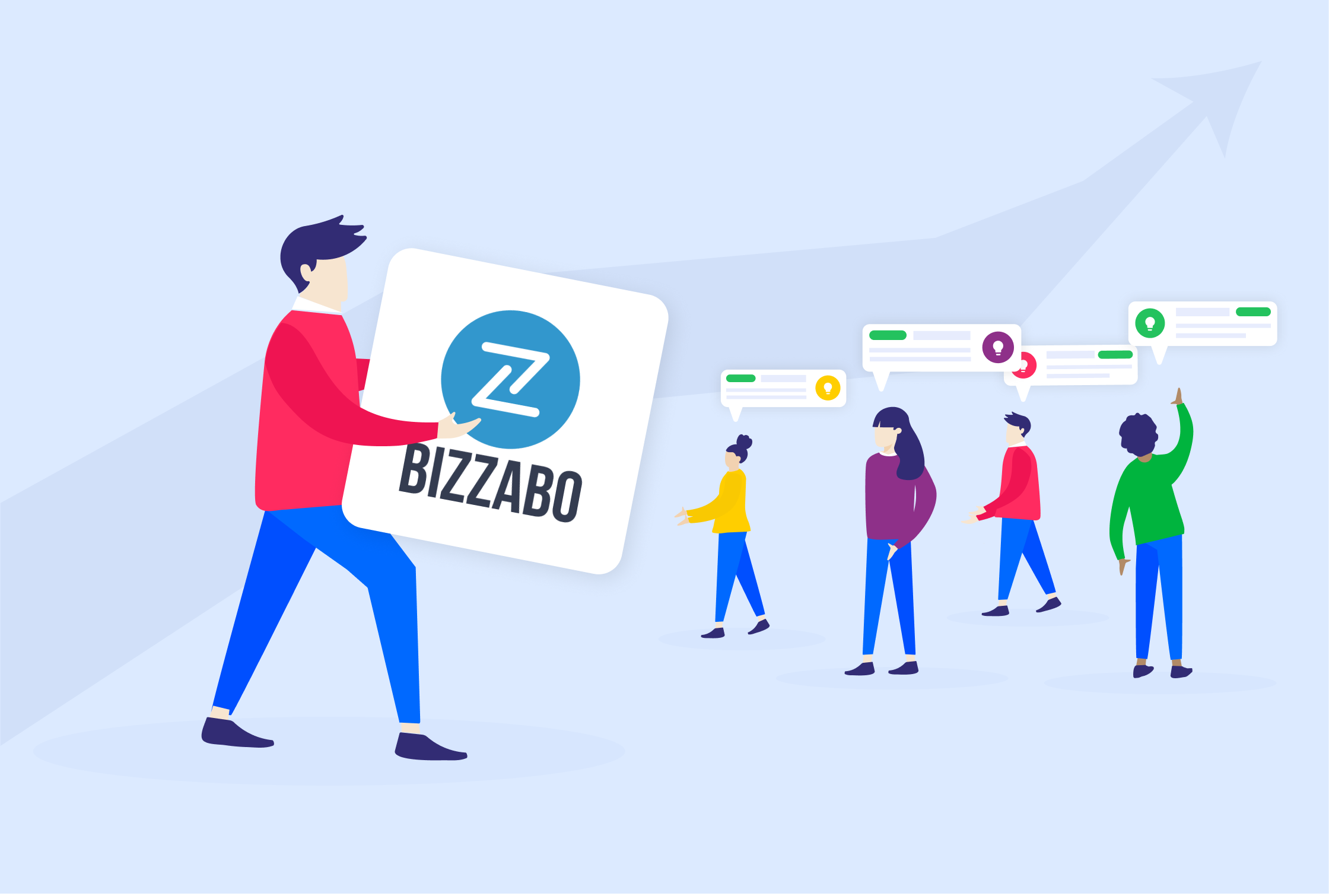
Case study: Implementing a scalable customer feedback model at Bizzabo
A few years back, the need for a one-to-many customer feedback model at fast-growing event management platform Bizzabo became evident. With the sign-off from the leadership team, the journey to build a scalable and transparent customer feedback process began.We spoke to Ben Anthonisz, Manager of Customer Education at Bizzabo, who went from a one-man-band to managing a customer community team in their efforts to scale Bizzabo’s one-to-many processes, collect customer feedback, and ultimately – increase the ARR to CSM ratio.Let’s take a look at what sent Bizzabo on a quest to find a solution for their customer feedback needs in the first place.
Estimated Read Time: minute

inSided adds time limit feature to community platform due to customer complaints about “record-high retention rates”
[Amsterdam, Netherlands – 1 April, 2021] inSided, the leading Customer Success community platform for B2B SaaS and subscription-based companies has taken drastic measures to cater to customer needs as their Customer Success and Product teams were inundated with customer complaints about “record-high retention rates.”
Estimated Read Time: minute

Customer feedback: the core of community-led growth
You know all about product-led growth (PLG) already. It’s been ruling the SaaS world for years.But there’s a new kid on the block: Community-led growth. And it’s about to take off. More and more B2B companies are starting to realize how building communities contribute to their bottom line, reduces costs, and drives growth.Even VC firms have opened their eyes to community, with Grayscale stating that “we have been seeing a big underground trend emerge in our portfolio companies – growth coming from building communities.”A big part of that growth is a result of increased self-service (customer autonomy) and engagement, ultimately getting more value out of a product. But a huge part of that growth also comes from listening to the Voice of the Customer, acting on customer feedback, and building a product your customers want to use.But before we talk more about customer feedback and community-led growth, let’s take a step back. What do we mean when we say community? And what exactly is a customer community? What’s a customer community? Platforms like Reddit and Github have become synonymous with the word “community.”But what exactly is community?Community is a result of human beings wanting to connect. They come together because they share the same purpose and motivations – they are driven by shared interests. A customer community works no different. It draws upon that inherent and organic behavior in humans – the desire to connect, explore, and engage with others.A customer community, facilitated by technology, gives your customers a dedicated place to engage with each other and with your brand.Customers, just like in any other community setting – whether online or offline – will band together because of their shared interests and motivations. In this case, as users of your product(s) and its features. A customer community enables your customers to effectively self-serve, engage, and provide feedback, ultimately making your customers more invested and successful with your product.With that said, let’s dive a bit deeper into community-led growth.
Estimated Read Time: minute

Setting up a Voice of the Customer program (and making it a success)
Making your customers feel heard is a big part of customer health. Companies that invest in customer feedback and prioritize the voice of the customer typically report much higher retention rates. Plus, this also means they spend less time (and money) on customer support and retention.This all sounds like a pretty good deal, doesn’t it? So how do you establish a Voice of the Customer (VoC) program, and how do you make it successful?But first, what exactly is a Voice of the Customer program?
Estimated Read Time: minute

A step-by-step guide to establishing a Customer Success-driven feedback loop
Earlier this week, we launched our revamped Ideation Module and brand new Product Updates Module in an effort to help Customer Success and Product teams create a better way to manage customer feedback and close the loop.But how do you build a Customer Success-driven feedback loop? We’ve broken it down into seven steps to help you get started.Let's take a look.
Estimated Read Time: minute
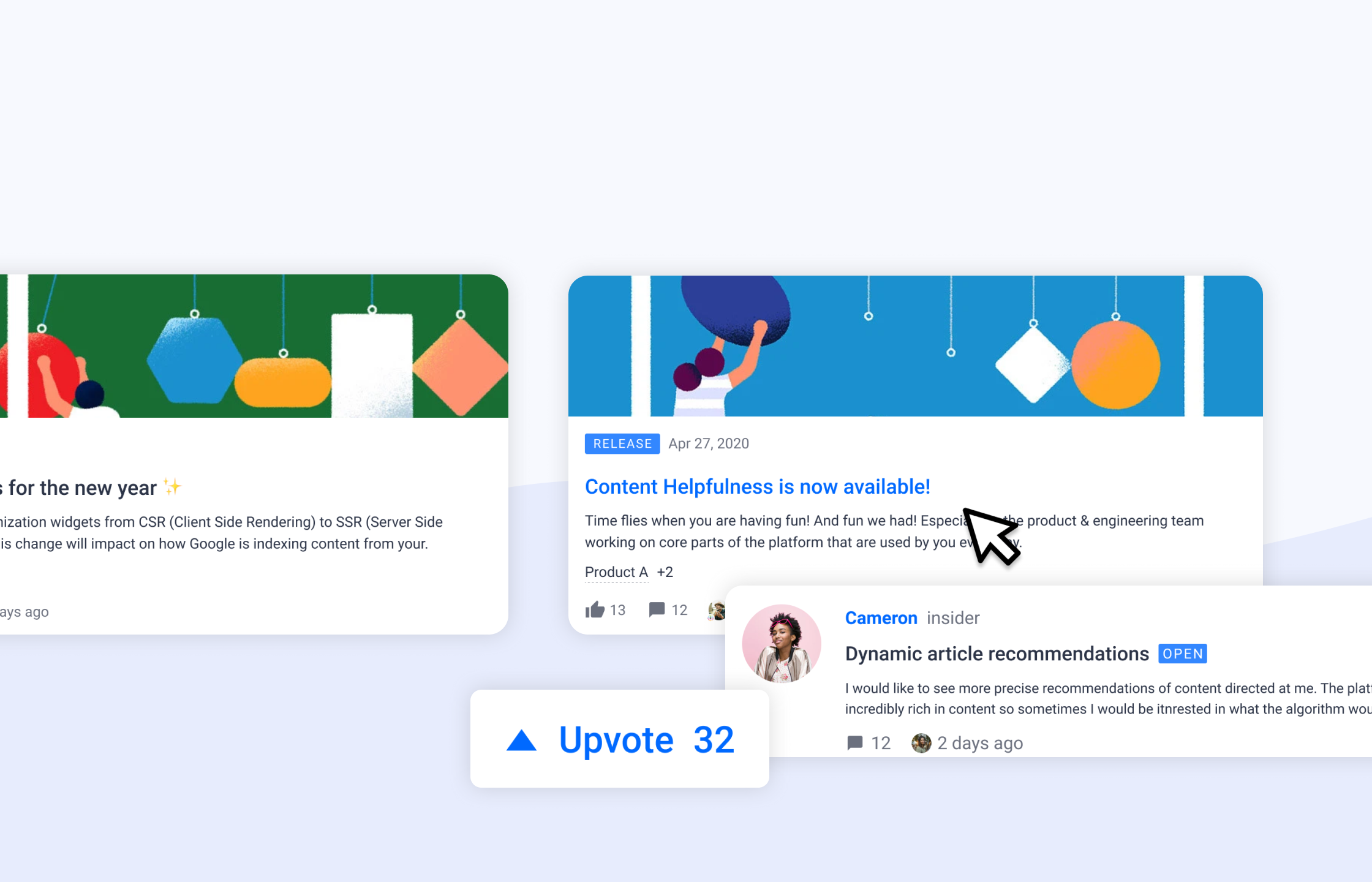
Product update: Introducing our revamped Ideation Module and new Product Updates Module
Our Product team has been hard at work to deliver a better customer experience when it comes to managing product feedback and closing the loop. That’s why today, we’re excited to announce our revamped Ideation Module and our brand new Product Updates Module.Let’s take a closer look at what you can expect from each.
Estimated Read Time: minute
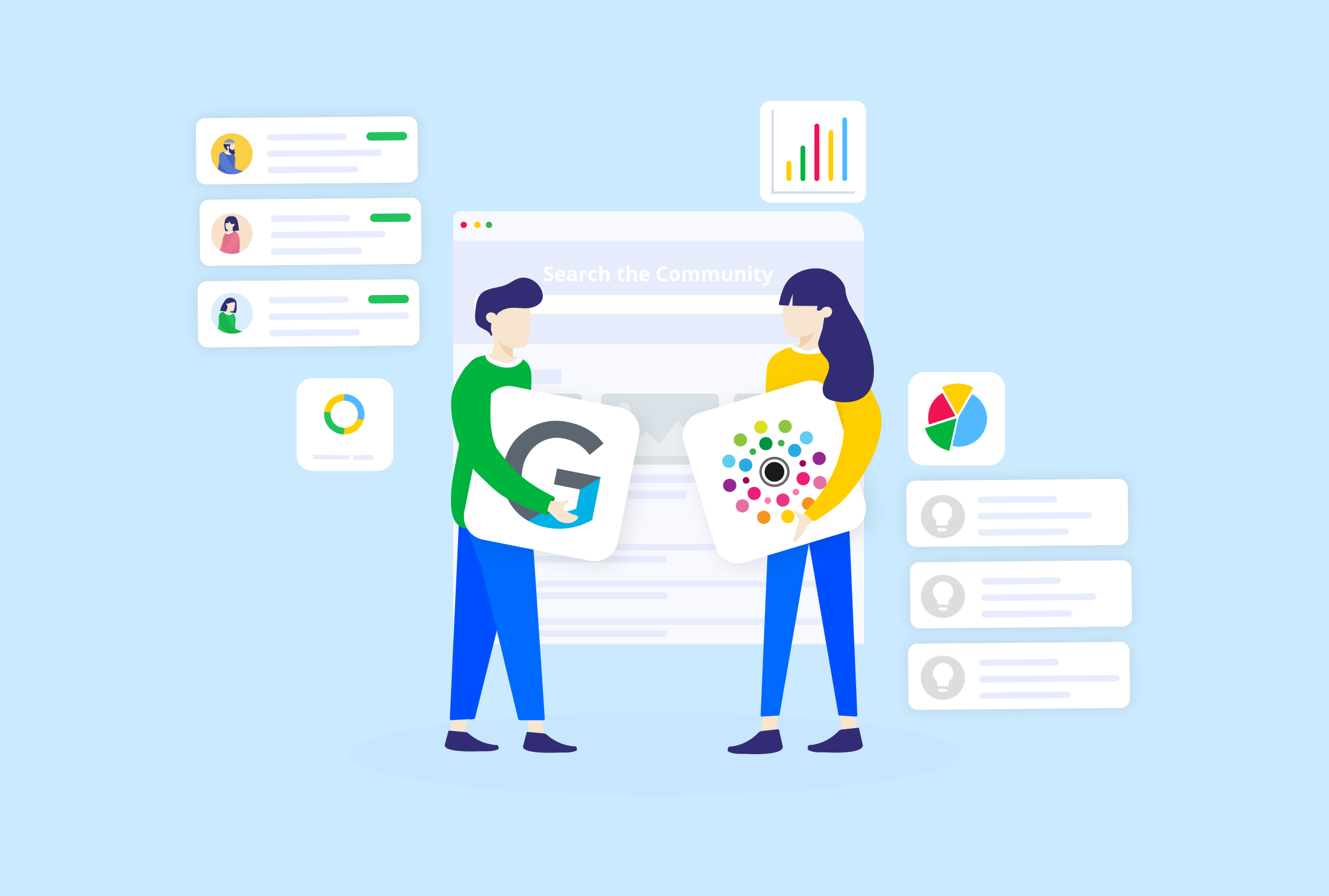
Case study: Gainsight’s community-driven product feedback loop
It’s the year 2018.Gainsight has decided to find a new community vendor. This will be the third time since they launched the project in 2014.Yes, you read that right, it’s Gainsight’s third attempt at getting community right. The pressure is on to deliver. But not just for their own sake, for the sake of their customers, too.So when Gainsight approached us, we were delighted. As a Customer Success Community platform on a mission to improve Customer Success in SaaS, having Gainsight choose us as their community platform further cemented our belief that community is (and always should be) at the heart of Customer Success.As so often is the case in B2B SaaS, your company's success hinges on how successful you can make your customers (and your customers’ customers) with your product. A huge part of making that happen comes down to collecting, understanding, prioritizing – and implementing – feedback from your customers.Customer feedback, when managed correctly, is what paves the way for sustainable growth.But the tricky part is creating an effective workflow. You need buy-in from relevant departments in your organization, you need the right technology, and you need to build a feedback loop that you can actually close.But with a little help from us at inSided, that’s exactly what Gainsight set out to deliver: A community-driven feedback loop.But before we get into that part of the story, why use a customer community to gather product feedback in the first place?
Estimated Read Time: minute
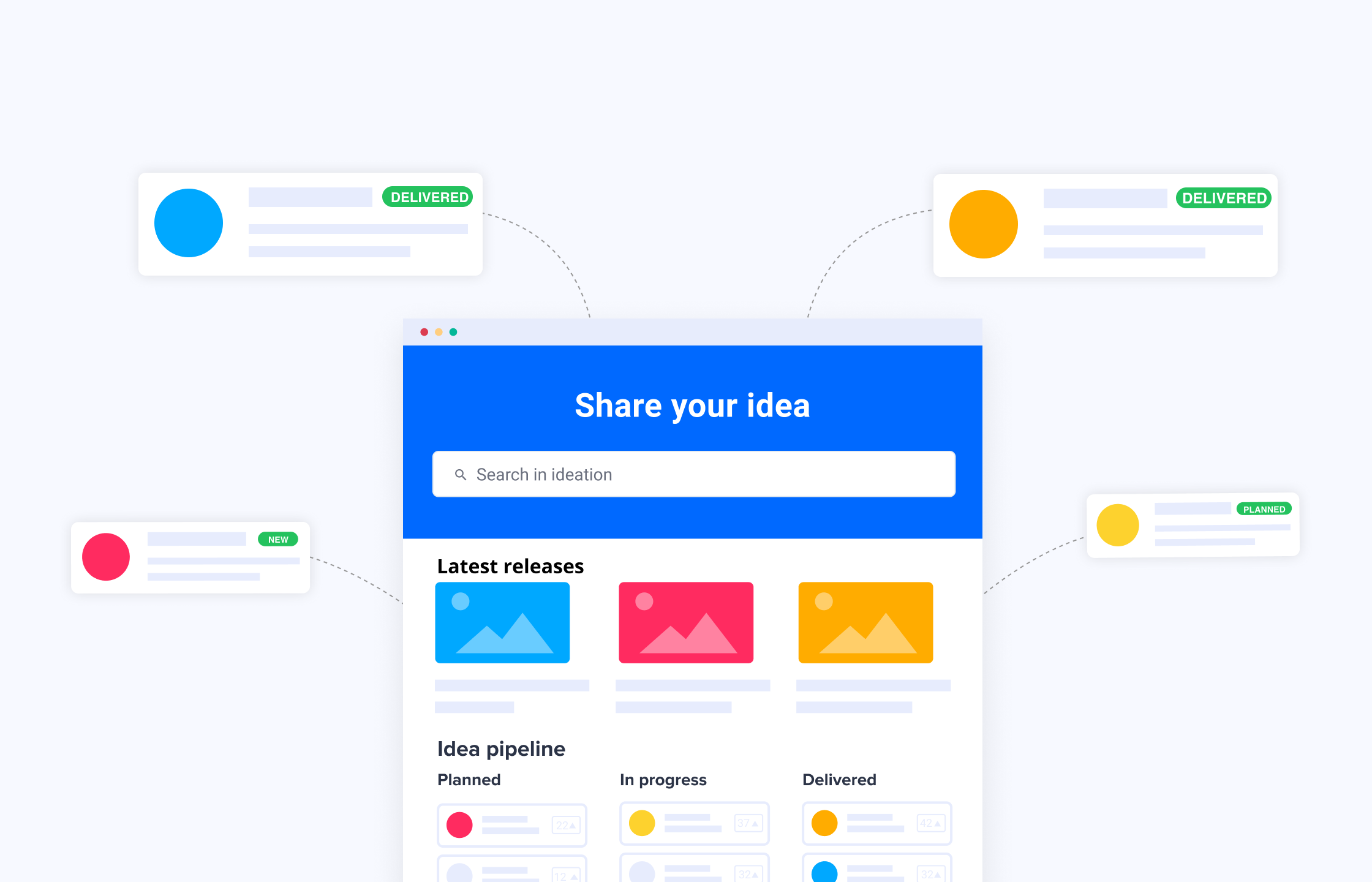
6 reasons why a customer community is the best channel to collect customer feedback
So far in our Close the Loop series we’ve looked at who should own customer feedback, we’ve walked you through our own ideation process at inSided, and how Customer Success can manage feedback effectively.Today, we want to talk about why a customer community is the best channel to collect customer feedback.Let’s dive straight in.
Estimated Read Time: minute

How Customer Success can manage customer feedback effectively
So far in our Close the Loop series, we’ve talked about how Customer Success and Product can work together to close the loop and how inSided’s own customer feedback and ideation process has evolved over the years.At this point, it shouldn’t be news to anyone that successful customers can grow a business faster than any sales or marketing initiatives. But for customer feedback to serve as the foundation for that growth, you need to have a structured way of managing and prioritizing customer feedback in place.That’s why this week, we’re going to look at how you can manage, structure, and prioritize customer feedback using our very own Product Feedback and Ideation solution.Let’s start with the collection part.
Estimated Read Time: minute
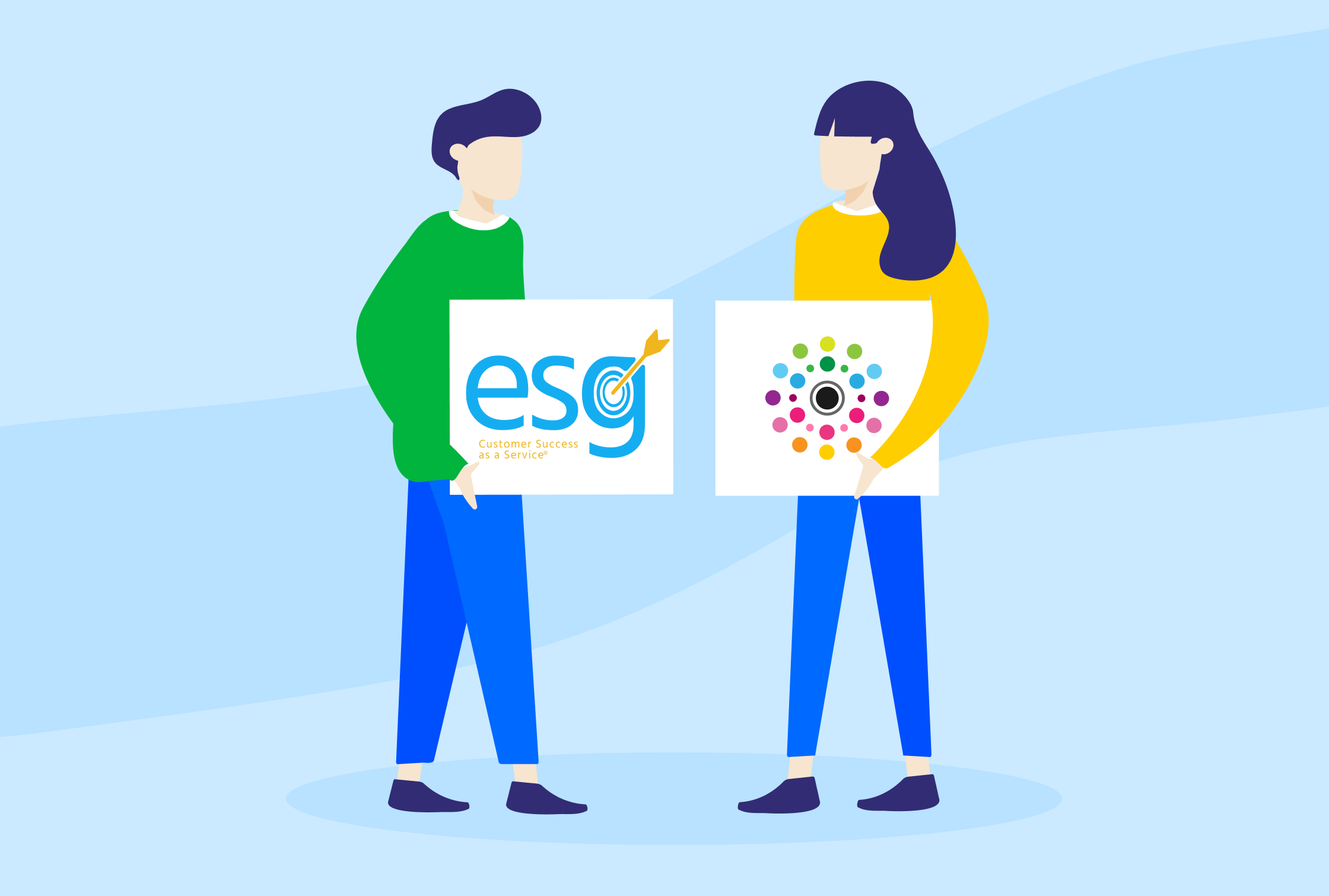
inSided partners with ESG to co-create meaningful content for the CS community
[Amsterdam, Netherlands - February 4, 2021] Customer Success as a Service® provider ESG announces a partnership with inSided, the only Customer Success Community platform for SaaS and subscription-based companies. Both ESG’s services and inSided’s platform share the same ultimate goal: meaningful customer engagement that leads to increased retention, growth, and advocacy.
Estimated Read Time: minute

Customer Success as the “everything department:” What it is, why it happens, and how you can prevent it
In our first podcast episode of the year, “Your CS team is at risk of becoming the “everything department,” our guest, Customer Success veteran turned investor, Rav Dhaliwal, talks about what happens when Customer Success is an afterthought, why it happens, and what you can do to prevent it.But let’s start from the beginning: what’s an “everything department?”
Estimated Read Time: minute
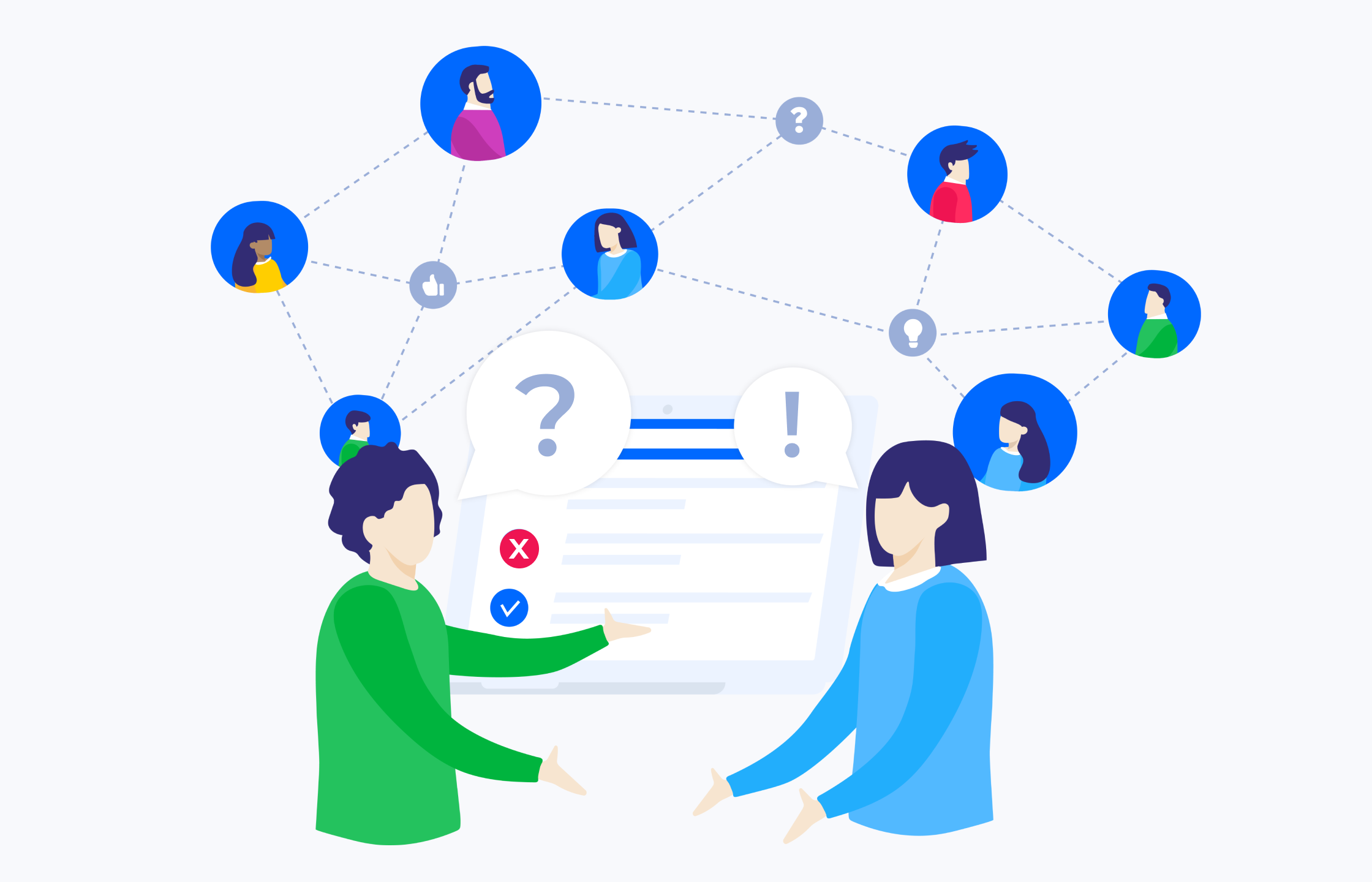
Customer Success vs Product: Who should own customer feedback?
Did you know that it’s 25 times more cost-effective to retain existing customers than investing in new ones?Yup, that’s right.And that’s why customer feedback is one of the most powerful tools in your growth arsenal.But unless listened to, and more importantly – acted on – it’s completely useless.Typically, customer feedback lives in multiple tools across several departments. It’s in your email. It’s jammed up in Intercom. It’s on a Trello board somewhere. Spreadsheets. Oh god, the spreadsheets! And let’s not forget about Slack. Perhaps it’s in all of the above and then some?Perhaps it’s not centralized at all. (Yikes.)So this all begs the question: Who owns customer feedback?With Product and CS both at the forefront of the customer experience, who should own customer feedback? Whose job is it to make sure customer feedback is collected, prioritized, and acted on so that you can close the feedback loop?Let’s explore.
Estimated Read Time: minute
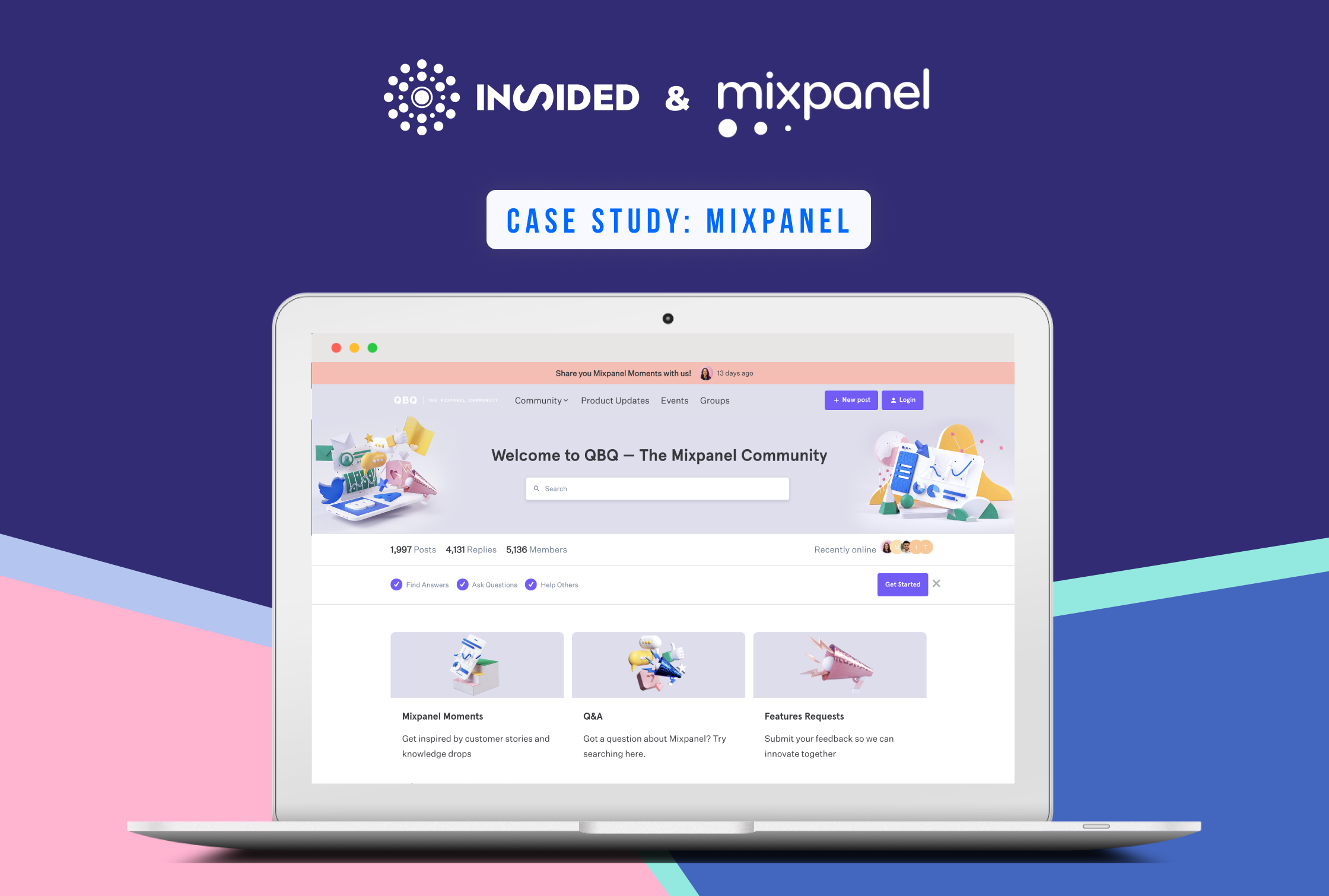
How Mixpanel drives product adoption and increases retention through their customer community
When Mixpanel first implemented its customer community, the goal was to decrease the number of support tickets and thereby free up Support. But soon, greater benefits of community became evident, including its direct impact on product adoption and retention.
Estimated Read Time: minute
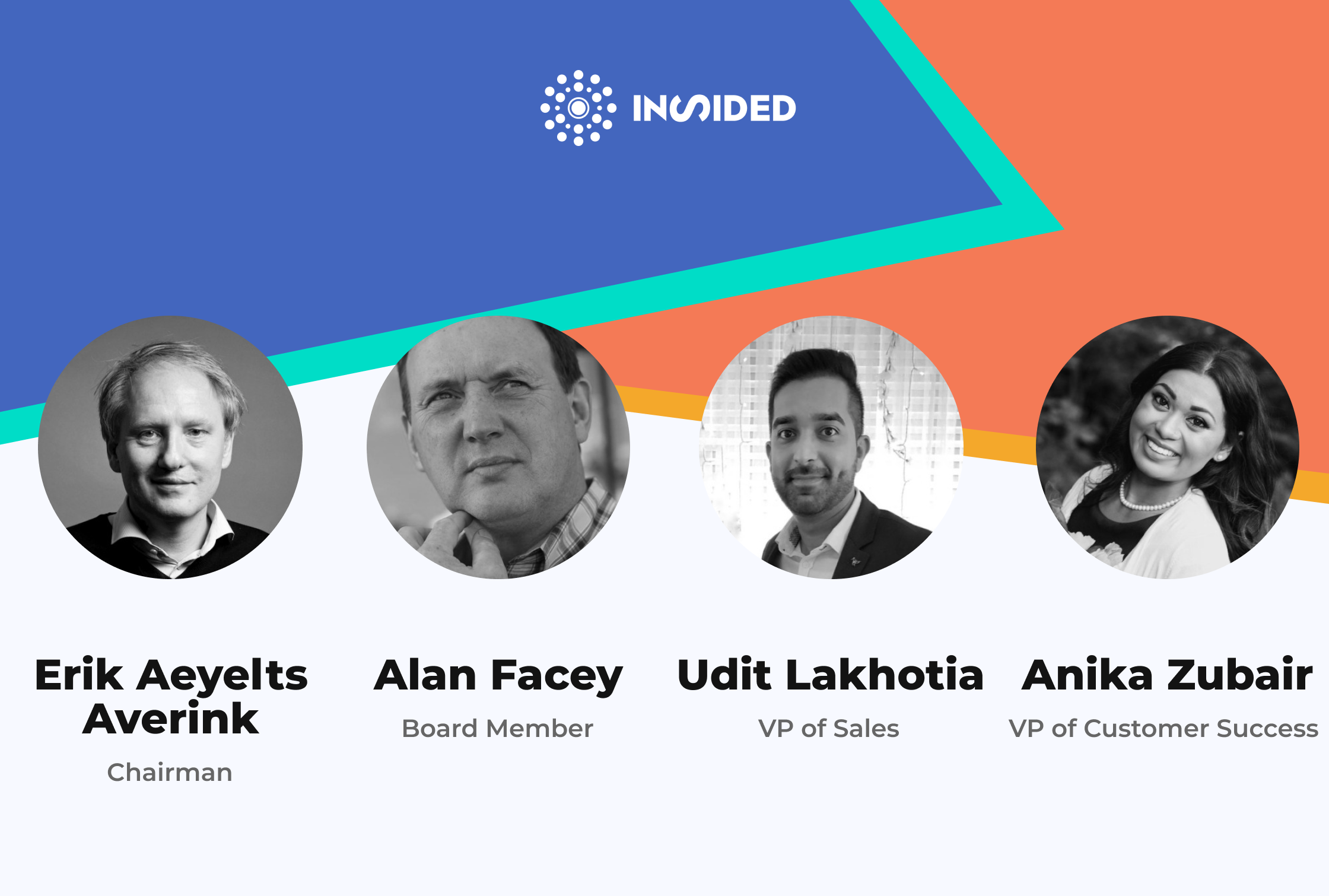
inSided welcomes two new board members and adds international talent to the leadership team
[Amsterdam, Netherlands – January 26, 2021] InSided, the Customer Success community platform, has welcomed two new board members and added two key roles to its leadership team in preparation for expansion in 2021.The leader in Customer Success technology strengthened its board of directors with the addition of Alan Facey, as well as Erik Aeyelts Averink who will serve as the Chairman of the Board.Erik Aeyelts Averink, with 25 years of experience as a Strategic Advisor, Board Member, and (private) Investor, has worked with dozens of software companies and has played a key role in bringing companies to global market leadership.
Estimated Read Time: minute

[Survey] How do you use technology in your Customer Success team?
Customer Success, traditionally, has been perhaps one of the most under-appreciated functions in a company. As a result, they’ve also been painfully underserved when it comes to technology.But things are looking up. Because 2020, while a terrible year in many ways, highlighted the importance of Customer Success more than ever. And not only that, Customer Success finally received recognition as a real growth driver, rather than a mere support function.But a common question we get from CS professionals is “Do I have the right tech-stack and am I leveraging it in the best way?”So we decided to team up with the good folks over at Planhat to answer that question by providing an industry-benchmark. To do so we have created a quick survey.
Estimated Read Time: minute

inSided sees record 220% year-on-year growth as B2B demand for Customer Success Communities soars
[Amsterdam, Netherlands – January 12, 2021] In 2020, inSided, the Customer Success community platform, saw 220% year-on-year growth as more B2B companies wanted to leverage the power of community to facilitate customer self-service to increase retention and drive growth.
Estimated Read Time: minute

7 predictions to include in your Customer Success strategy for 2021
2020 has been a year filled with unique circumstances. While customer behavior and engagement preferences have already seen drastic changes in recent years, this year really upped the ante for CS teams around the globe.So with 2020 (finally) drawing to a close, what changes will CS teams make based on the revelations this year has brought, and what are some other trends that will continue to move forward with momentum in the new year?Let’s take a look at what we can expect of Customer Success as we head into 2021.
Estimated Read Time: minute
Malesuada proin libero nunc consequat
[Amsterdam, Netherlands - February 4, 2021] Customer Success as a Service® provider ESG announces a partnership with inSided, the only Customer Success Community platform for SaaS and subscription-based companies. Both ESG’s services and inSided’s platform share the same ultimate goal: meaningful customer engagement that leads to increased retention, growth, and advocacy.
Estimated Read Time: minute
The new standard for customer health (Burn the Churn – Clone)
Similar to the multi-billion dollar health and wellness industry, the SaaS industry goes through its own fads and trends. Some stick, others don’t.
Estimated Read Time: minute
3 ways community can help you burn the churn (and the stories to prove it) (Burn the Churn – Clone)
Welcome to another week of Burn the Churn! This week, we’re continuing to work on the core by exploring how community allows your customers to engage with your product and your brand on their own terms. The result? A stronger, healthier relationship and less churn. Let's go! (Not signed up for the challenge yet? Join here.)Last week, we talked about data. And if we were to choose one metric category to focus on, it would be engagement.
Estimated Read Time: minute
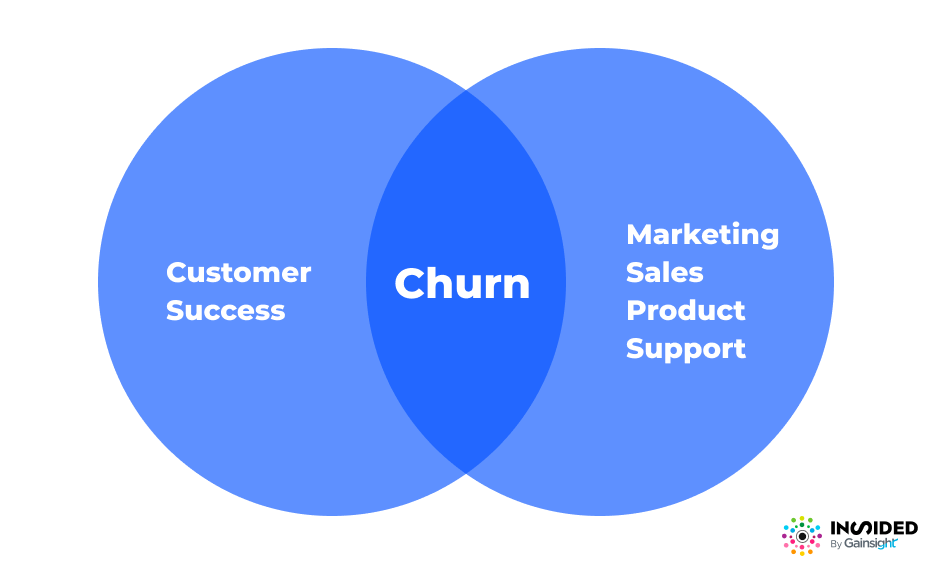
Check yo churn: Are your indicators accurate? (Burn the Churn – Clone)
Last week, we kicked off our Burn the Churn customer health challenge with a nice warm-up, talking about the new standard for customer health and going back to basics with a refresher course on customer health scores. (Sign up to make sure you don’t miss any of the good stuff!)
Estimated Read Time: minute
Burn the churn: Join inSided’s 8-week customer health challenge (Burn the Churn – Clone)
New year, new renewals.
Estimated Read Time: minute
